Swifts are a group of aerial birds that belong to the family Apodidae. They are characterized by their long, slender wings and swift, acrobatic flight. They are found in all parts of the world, and there are over 90 species of swifts.
They are highly adapted to life in the air, and feed on insects found in the sky. Swifts have an incredible ability to remain airborne for long periods of time, and have been known to cover thousands of miles in a single flight.
They are an integral part of the ecosystem, and an important source of food for other animals.
1. Common Swift
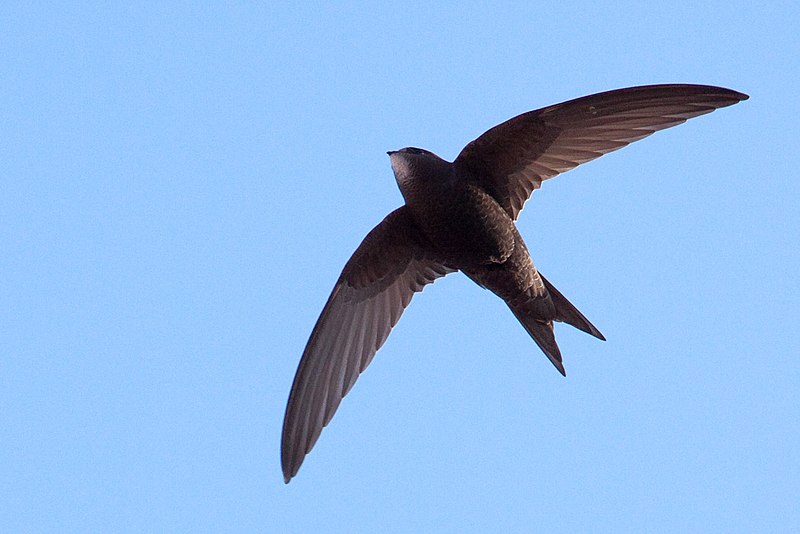
The Common swift is a medium-sized bird with an appearance similar to the barn swallow or house martin.
Its wings are larger, however it is not related to these species but instead belongs in its own order of Apodiformes.
The similarities between the two groups have come about due to convergent evolution and a shared environment.
As for relatives, they can be found among New World hummingbirds and South American swifts; whereas more distant cousins include nightjars as well as treeswifts from Asia/Africa and Australian swiftspecies.
These birds live up high in the air where they remain on constant flight even when sleeping or eating.
They usually migrate south during winter months then return again each springtime bringing life back into our skies.Scientific classification:
| Kingdom | Animalia |
| Phylum | Chordata |
| Class | Aves |
| Order | Apodiformes |
| Family | Apodidae |
| Genus | Apus |
| Species | A. apus |
2. Chimney Swift
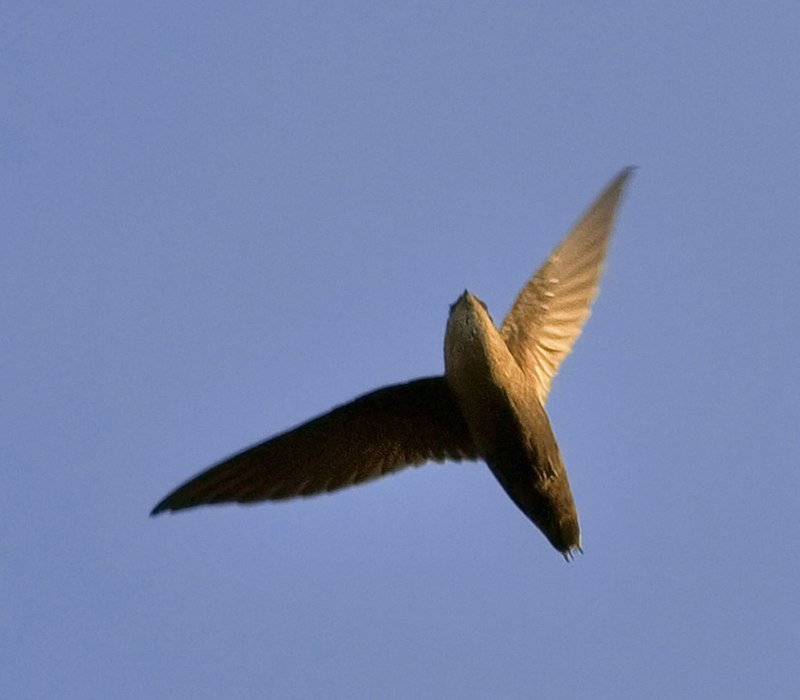
The Chimney Swift is a bird that belongs to the swift family Apodidae. It has no subspecies and is closely related to both Vaux’s swift and Chapman’s Swift.
This sooty gray bird with very long, slender wings stands out from other swifts in its genus due to its short legs.
They are found all over North America, but migrate south during winter months for more temperate climates.
These agile birds spend most of their lives on the wing while they feed on aerial insects such as flies and moths using their curved beaks which were specifically adapted by evolution for this purpose.
Their nests consist of twigs glued together with saliva secreted by glands located near their mouths, usually built inside chimneys or hollow trees making them an important species for pest control.Scientific classification:
| Kingdom | Animalia |
| Phylum | Chordata |
| Class | Aves |
| Order | Apodiformes |
| Family | Apodidae |
| Genus | Chaetura |
| Species | C. pelagica |
3. Vaux’s Swift
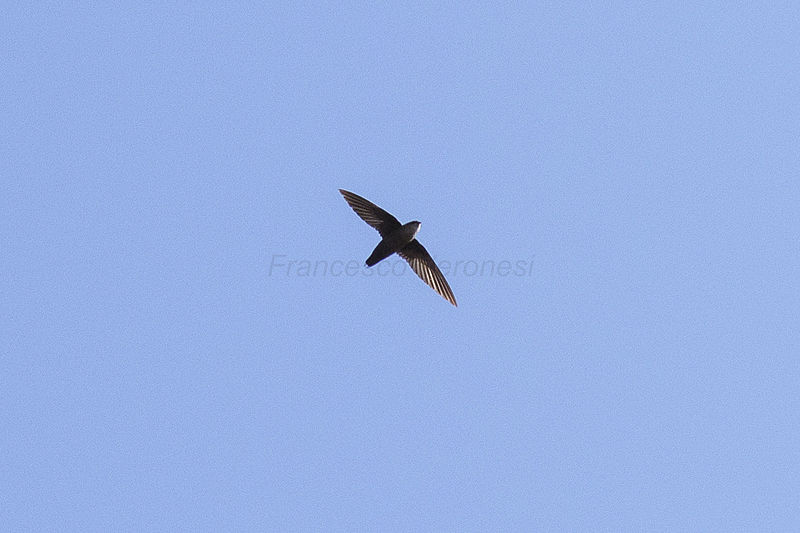
Vaux’s swift is a small bird native to North America, Central and South America. Named for the American scientist William Sansom Vaux, it measures between 10.7-11.2 cm (4.2-4.4 in) long and weighs 18 g (0.63 oz).
Northern populations are slightly larger at 11.5 cm (45 in). It has greyish brown feathers with dark stripes on its back as well as an orange throat patch which becomes more visible during flight or when singing.
Its beak is black while its legs are short and weak compared to other Chaetura species of swifts but it still manages agile flying abilities due to its wings which can reach up to 25 mph.
This species prefers nesting around old buildings such as churches or silos making them a common sight even in urbanized areas where they feed off insects like moths and flies.Scientific classification:
| Kingdom | Animalia |
| Phylum | Chordata |
| Class | Aves |
| Order | Apodiformes |
| Family | Apodidae |
| Genus | Chaetura |
| Species | C. vauxi |
4. American Black Swift
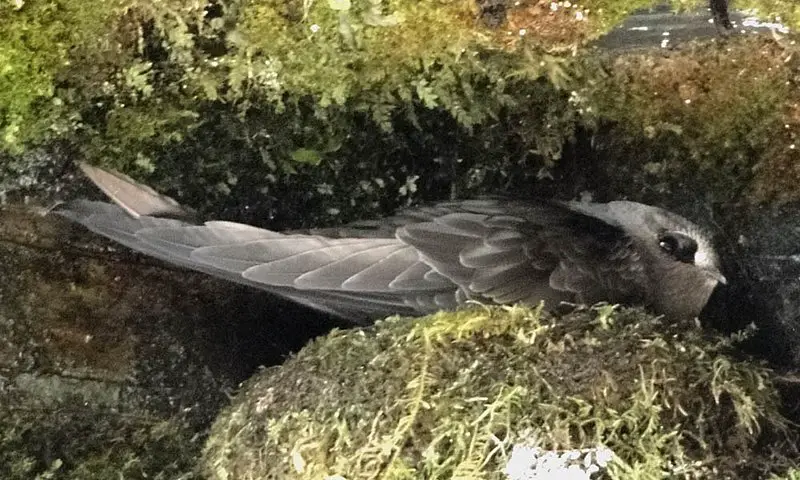
The American black swift is a species of bird that resides in North America, Central and South America as well as the Caribbean.
It was formally described by German naturalist Johann Friedrich Gmelin in 1789.
These birds prefer high mountain regions, living near fast-flowing streams or waterfalls with plenty of insects for food.
They have long wings which allow them to soar up on thermals and catch insects midair.
As their name suggests, they are almost entirely black with some lighter feathers around the neck area giving it an overall glossy look when seen from below.
Their breeding season takes place between May-August where both parents take part in caring for the young until they can fly independently after about 6 weeks old.Scientific classification:
| Kingdom | Animalia |
| Phylum | Chordata |
| Class | Aves |
| Order | Apodiformes |
| Family | Apodidae |
| Genus | Cypseloides |
| Species | C. niger |
5. White-Throated Swift
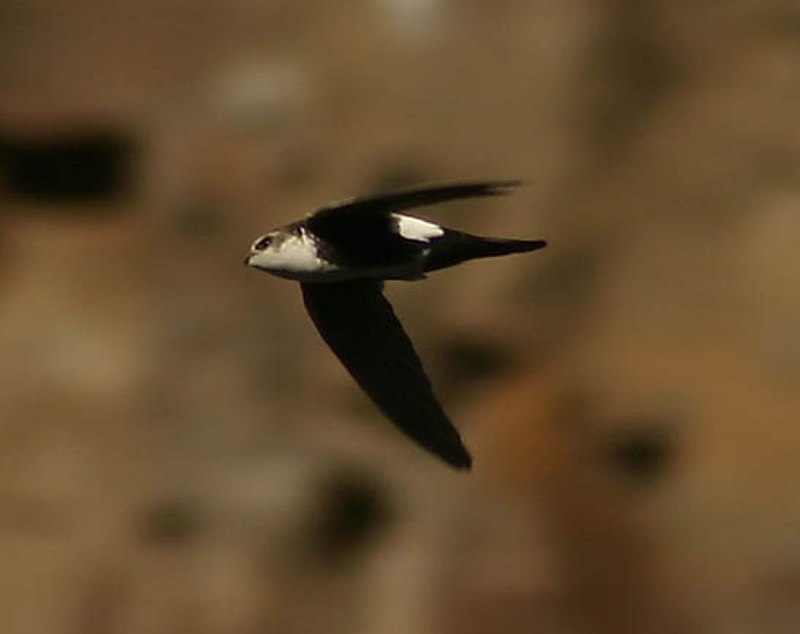
The White-throated Swift is an impressive bird native to western North America and parts of Central America.
It has a striking white throat patch, contrasting with its dark grey body and wings.
These birds are found in coastal regions from Northern California up to southern British Columbia, but also have migratory populations throughout the Great Basin and Rocky Mountain regions.
They prefer open habitat such as cliffs or canyons where they nest on steep slopes and rocky surfaces under overhangs.
They feed mainly on flying insects that they catch while in flight using their wide beaks for scooping them out of the air.
White-throated swifts are fast flyers capable of reaching speeds up to 60 miles per hour during migration season when large groups will soar together over mountain ranges displaying incredible aerobatic maneuvers.Scientific classification:
| Kingdom | Animalia |
| Phylum | Chordata |
| Class | Aves |
| Order | Apodiformes |
| Family | Apodidae |
| Genus | Aeronautes |
| Species | A. saxatalis |
6. Edible-Nest Swiftlet
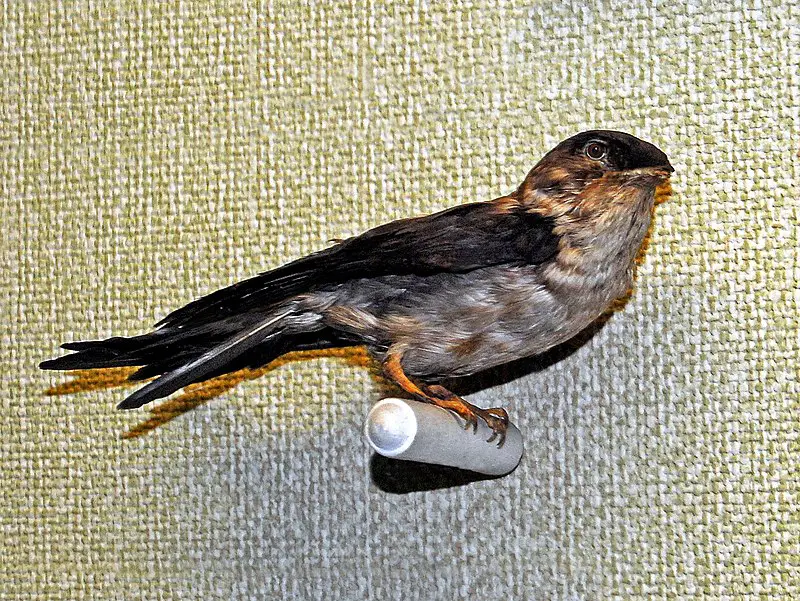
The Edible-nest swiftlet is a small bird found in Southeast Asia, belonging to the Swift family.
It has an opaque and whitish nest which is made of solidified saliva, making it one of its most prized features as it forms the main ingredient for bird’s nest soup – a Chinese delicacy.
Its body length ranges from 14cm (5.5in) and can weigh up to 13g(0.45oz). They feed on insects or flying prey by catching them mid-air with their beaks rather than perching on branches like traditional birds do.
Their nests are usually built in dark corners high above ground level such as caves or gaps between rocks where they lay two eggs at once before hatching them after 18 days incubation period .
The male edible-nest swiftlets also produce special sounds using their wings during courtship season which helps attract females during mating season.Scientific classification:
| Kingdom | Animalia |
| Phylum | Chordata |
| Class | Aves |
| Order | Apodiformes |
| Family | Apodidae |
| Genus | Aerodramus |
| Species | A. fuciphagus |
7. White-Throated Needletail
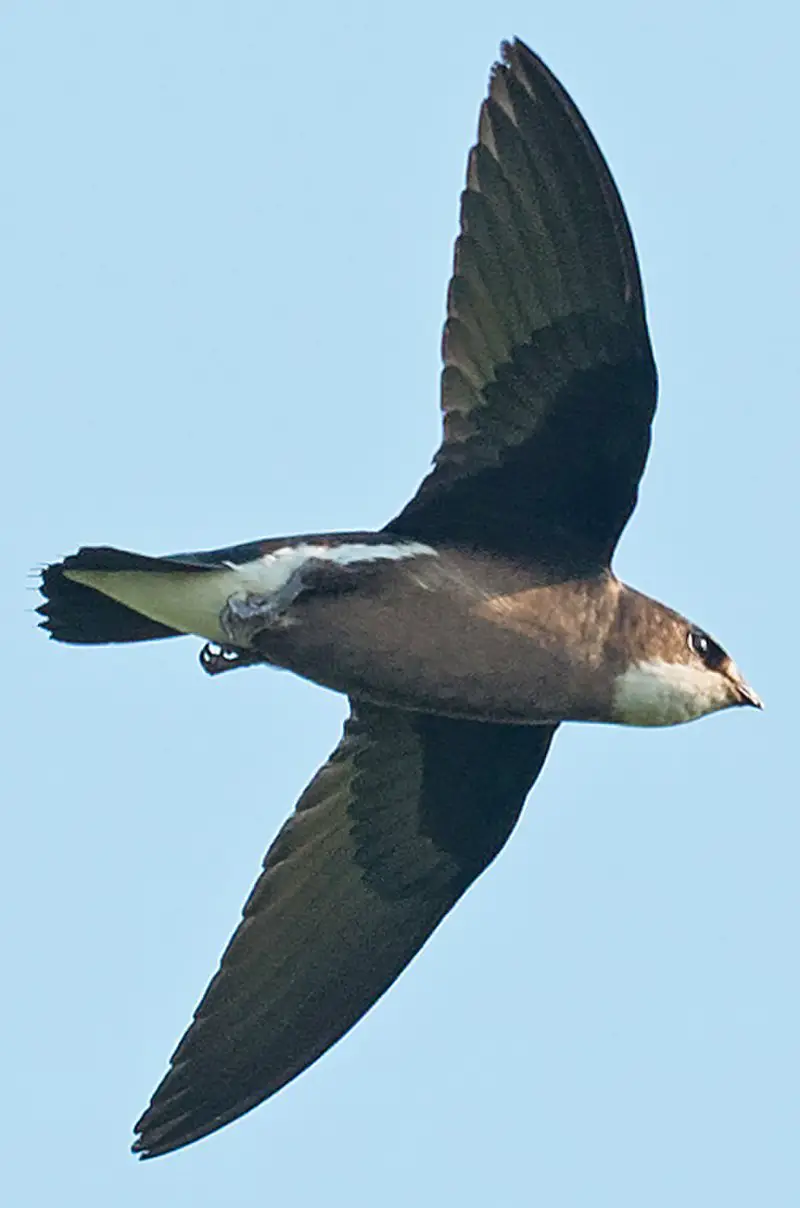
The white-throated needletail is an impressive bird, noted for its incredible speed of up to 170 km/h.
It belongs to the Hirundapus genus and has a distinctively long tail which gives it its alternative names needle-tailed swift or spine-tailed swift.
These birds are found mainly in Southeast Asia and parts of Australia, nesting on cliff faces or hollow trees.
They feed on flying insects like dragonflies, catching them with their beaks as they fly through the air at high speeds.
Their diet also includes small mammals such as bats that have been caught midair during their hunts.
White throated needletails mate for life and often live together in large flocks when not breeding season – another impressive feat considering how fast these creatures can go.Scientific classification:
| Kingdom | Animalia |
| Phylum | Chordata |
| Class | Aves |
| Order | Apodiformes |
| Family | Apodidae |
| Genus | Hirundapus |
| Species | H. caudacutus |
8. Mariana Swiftlet
The Mariana Swiftlet is a small species of swiftlet that can be found natively in Guam and the Northern Mariana Islands. It has a dark grey-brown head, upperparts and tail with shallow forking.
Its throat and upper breast are colored grey-white while its underparts are darker shades of gray. The bird measures around 11 centimeters long and has an average wingspan between 24 to 27 centimeters wide.
They feed mainly on flying insects such as mosquitoes, moths, flies, dragonflies etc., which they capture midair or glean from vegetation or other surfaces.
During mating season they construct nests made out of saliva threads which they attach to cave walls or ceilings near their breeding grounds at nightfall before returning back to roost during daytime hours.Scientific classification:
| Kingdom | Animalia |
| Phylum | Chordata |
| Class | Aves |
| Order | Apodiformes |
| Family | Apodidae |
| Genus | Aerodramus |
| Species | A. bartschi |
9. Black-Nest Swiftlet

The black-nest swiftlet is a species of bird found in several countries across South East Asia. It inhabits both lowland and montane forests, making its home among the treetops.
This small bird has become famous for one particular purpose; it produces edible nests which are highly valued in traditional Chinese cuisine as an ingredient to make birds nest soup.
The population of this species is unfortunately declining due to overharvesting, but conservation efforts have been successful at preserving their habitats and numbers in recent years.
Despite their dwindling numbers, these little creatures remain fascinating denizens of the forest canopy that deserve our respect and admiration.Scientific classification:
| Kingdom | Animalia |
| Phylum | Chordata |
| Class | Aves |
| Order | Apodiformes |
| Family | Apodidae |
| Genus | Aerodramus |
| Species | A. maximus |
10. Three-Toed Swiftlet
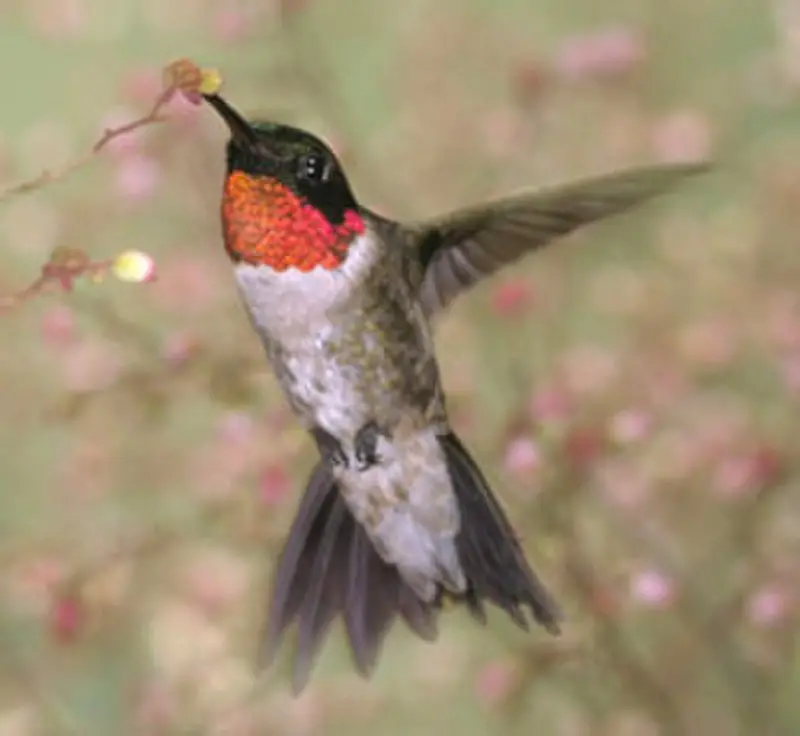
The Three-toed Swiftlet is a species of swift found in New Guinea. It has three toes on each foot, distinguishing it from other swifts.
The bird’s wings are long and pointed with short tails that end near its body when closed in flight.
Its plumage is typically dark grey or brownish, although some individuals may have lighter feathers on their backs and heads.
They feed mainly by catching insects mid-flight but also eat fruit occasionally which they find while flying around the canopy layer of forests and woodlands where they live.
These birds usually make their nests inside caves or crevices on cliffs to protect them from predators such as snakes, raptors and monkeys that prey upon these small birds for food.Scientific classification:
| Kingdom | Animalia |
| Phylum | Chordata |
| Class | Aves |
| Order | Apodiformes |
| Family | Apodidae |
| Genus | Aerodramus |
| Species | A. papuensis |
11. Tahiti Swiftlet
The Tahiti swiftlet is a species of bird endemic to the Society Islands in French Polynesia. It usually has a pale face and cannot be classified into any subspecies, making it monotypic in nature.
This swift can mainly be found on the islands of Tahiti and Moorea, where it lives its life within tree-covered areas.
These birds are small but fast fliers that feed mostly off flying insects like moths or beetles which they catch midair with their wide open mouths during flight.
They also build intricate nests made from saliva out of caves or crevices for breeding purposes.
The conservation status of this unique species is currently stable; however ongoing monitoring will ensure their long term survival within these beautiful islands.Scientific classification:
| Kingdom | Animalia |
| Phylum | Chordata |
| Class | Aves |
| Order | Apodiformes |
| Family | Apodidae |
| Genus | Aerodramus |
| Species | A. leucophaeus |
Also Featured In: Birds that Live in Tahiti Island,
12. Alpine Swift
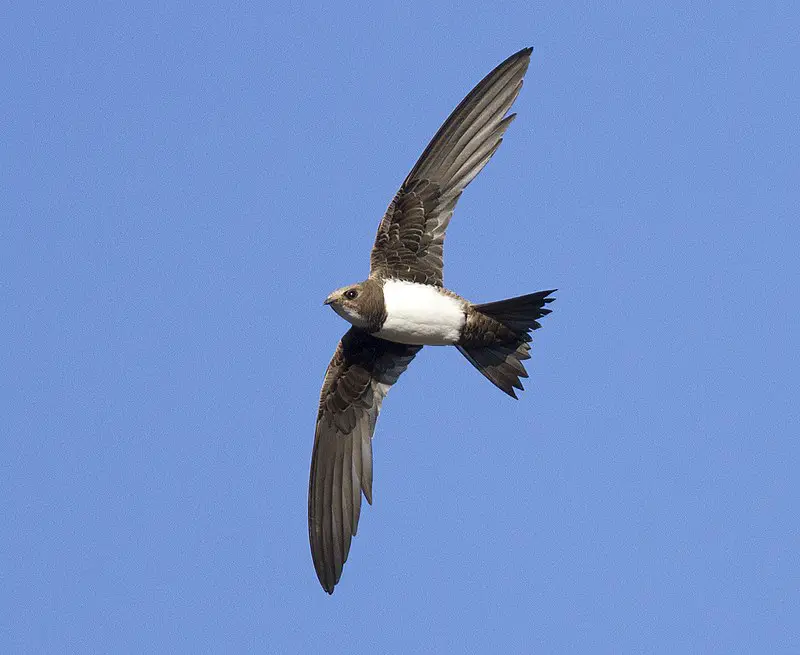
The Alpine Swift is a species of swift found in Africa, southern Europe and Asia. They have very short legs which they use to cling on vertical surfaces such as rocks and buildings.
These birds are migratory; the population from Southern Europe winter further south in Southern Africa.
During breeding season, these swifts gather around mountain ranges from southern Europe all the way to Himalaya mountains.
With their curved wings and long forked tails, alpine swifts fly gracefully at high altitudes with ease due to its light weight body structure.
When threatened by predators or storms, they can achieve speeds up to 111 km/h. This bird has an amazing aerial acrobatics ability that can leave even experienced pilots mesmerized.Scientific classification:
| Kingdom | Animalia |
| Phylum | Chordata |
| Class | Aves |
| Order | Apodiformes |
| Family | Apodidae |
| Genus | Tachymarptis |
| Species | T. melba |
13. Cape Verde Swift
Cape Verde swift, also known as Alexander’s swift, is a small bird of the swif family found only in the Cape Verde Islands.
It can be seen across all islands except Santa Luzia, with its main breeding grounds being Santiago, Fogo Brava Santo Antão and São Nicolau.
This species has a stable population and is not under threat at present time.
The birds have an overall dark brownish grey colouration on their back while having white underneaths which allow them to be easily spotted from below when flying around above ground level searching for food such as insects or other arthropods – their primary source of nutrition.Scientific classification:
| Kingdom | Animalia |
| Phylum | Chordata |
| Class | Aves |
| Order | Apodiformes |
| Family | Apodidae |
| Genus | Apus |
| Species | A. alexandri |
14. Mascarene Swiftlet
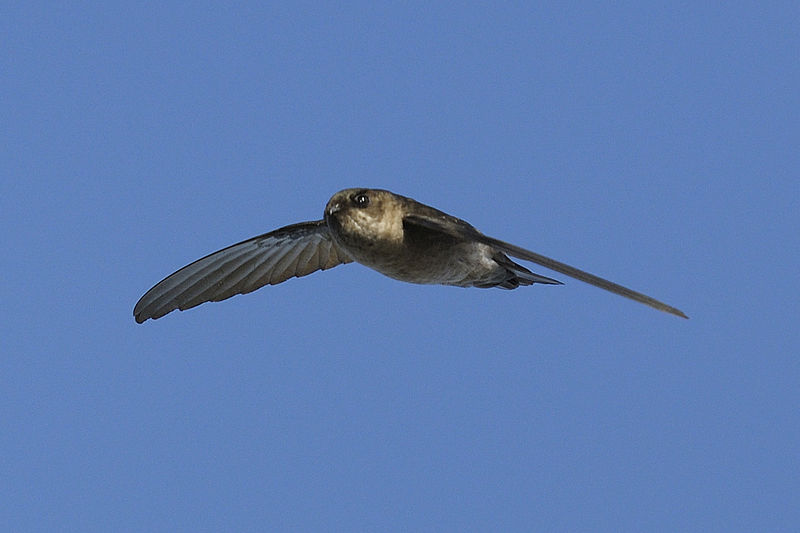
The Mascarene swiftlet is a species of bird in the Apodidae family, native to Mauritius and Réunion. It can be found inhabiting subtropical or tropical dry forests, mangrove swamps and caves.
Its diet consists mostly of flying insects which it catches while in flight. The populations on both islands have recently been confirmed as two different subspecies: francicus on Mauritius and saffordi on Réunion.
This small but agile bird has greyish-brown plumage with white bellies and pale throats, making them hard to spot amongst their natural habitats due to their excellent camouflage abilities.Scientific classification:
| Kingdom | Animalia |
| Phylum | Chordata |
| Class | Aves |
| Order | Apodiformes |
| Family | Apodidae |
| Genus | Aerodramus |
| Species | A. francicus |
15. White-Rumped Swiftlet
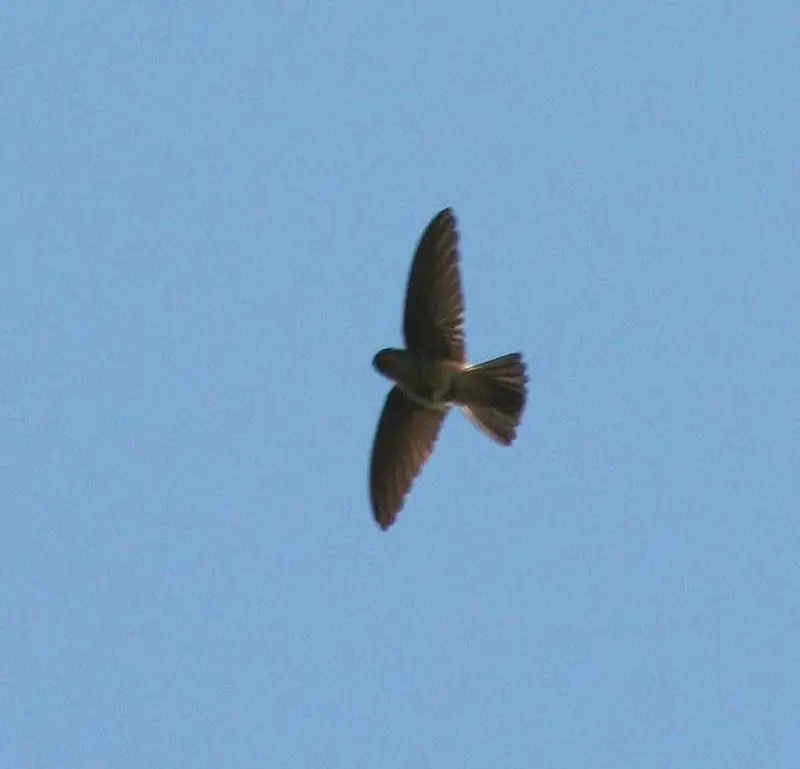
The White-rumped Swiftlet is a species of swift found in the Pacific Islands, including American Samoa, Fiji, New Caledonia and Vanuatu.
It has also been seen in Papua New Guinea and Solomon Islands.
This bird inhabits subtropical or tropical moist lowland forests where it feeds on flying insects such as termites, beetles and flies.
Its main predators are hawks while other threats include deforestation due to logging activities which may reduce its habitat size significantly.
The Australian population was considered separate species (Aerodramus terraereginae) until recently when researchers recognized them as one single species again.
Conservation efforts for this beautiful bird must be done if we want future generations to witness its gracefulness taking flight across our skies.Scientific classification:
| Kingdom | Animalia |
| Phylum | Chordata |
| Class | Aves |
| Order | Apodiformes |
| Family | Apodidae |
| Genus | Aerodramus |
| Species | A. spodiopygius |
16. African Palm Swift
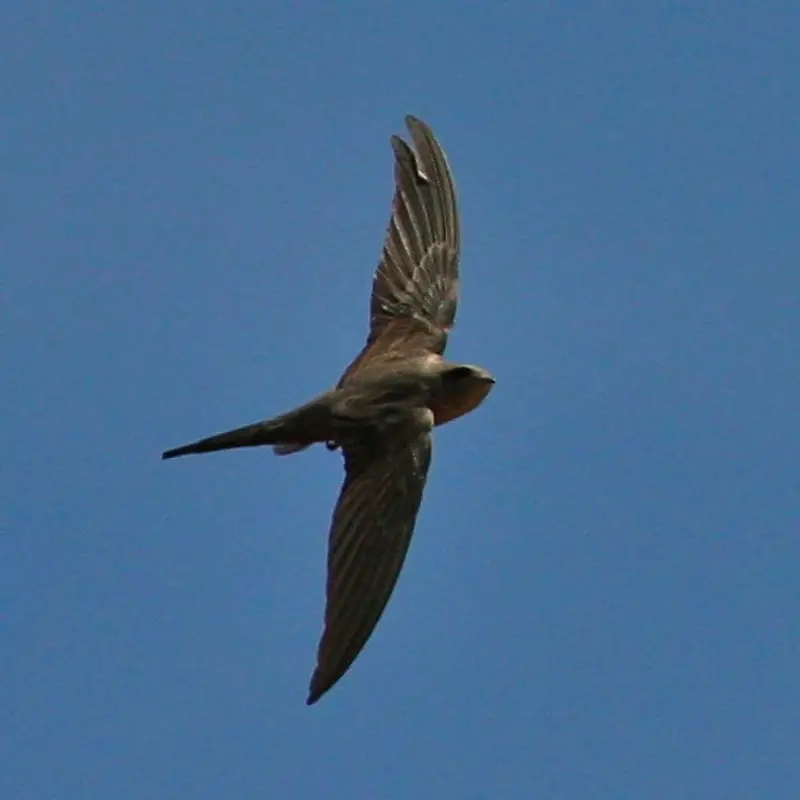
The African palm swift is a small, agile bird with similar characteristics to the Asian and Malagasy palm swifts.
It has a wide distribution across Africa, from Senegal to Ethiopia and further south into Angola.
This species of swift faces no significant threats in its natural environment but may actually be increasing in number due to human cultivation of palms for food production.
As an aerial insectivore, this species feeds on flying insects found near bodies of water or wetlands like lakes, rivers and mangroves.
They are known for their incredible agility as they soar through the air at speeds up to 40 mph.Scientific classification:
| Kingdom | Animalia |
| Phylum | Chordata |
| Class | Aves |
| Order | Apodiformes |
| Family | Apodidae |
| Genus | Cypsiurus |
| Species | C. parvus |
17. Giant Swiftlet
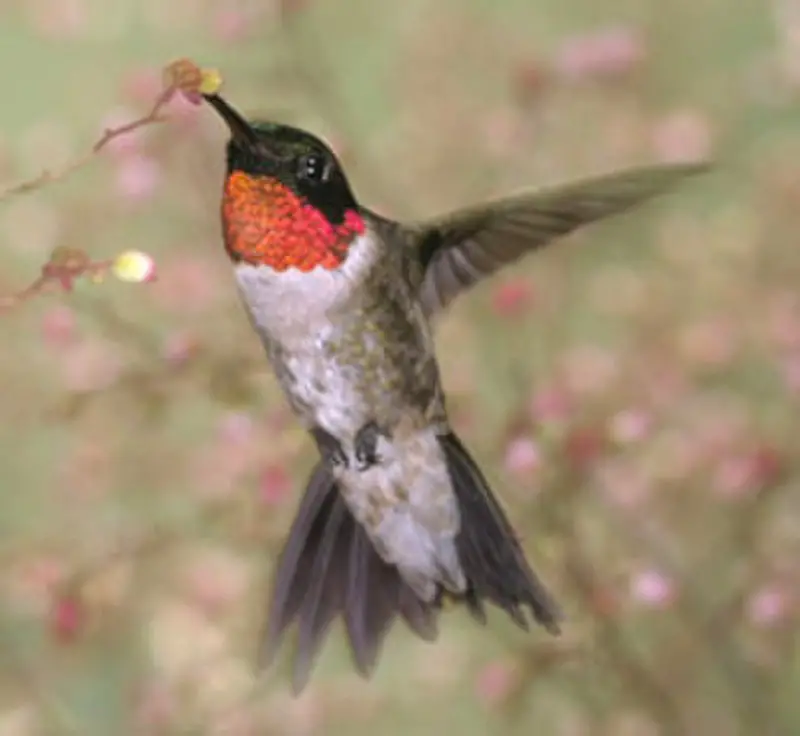
The Giant Swiftlet is a species of bird found in Malaysia, Sumatra and Java. It is the only member of its monotypic genus Hydrochous and part of the Apodidae family (swift).
This swift has an average wingspan that is larger than any other known species, making it truly unique in size.
Its natural habitats are subtropical or tropical moist montane forests and rivers but unfortunately these habitats are being threatened by habitat loss.
As such conservation efforts need to be taken if we want future generations to be able to enjoy this majestic creature.Scientific classification:
| Kingdom | Animalia |
| Phylum | Chordata |
| Class | Aves |
| Order | Apodiformes |
| Family | Apodidae |
| Genus | Hydrochous Brooke, 1970 |
| Species | H. gigas |
18. Mountain Swiftlet
The Mountain Swiftlet (Aerodramus hirundinaceus) is a species of swift found in New Guinea and nearby islands. It has three subspecies, with the nominate A.
h. Hirundinacea ranging over most of New Guinea and its surrounding islands including Karkar, Yapen and Goodenough.
This small bird measures only around 17 cm long and weighs approximately 10-15 gms on average; its slender body is mostly greyish brown with black streaks along its wings making it easily identifiable from other similar looking birds in the area.
Its diet consists primarily of insects which are caught midair as well as some fruits like figs that can be eaten directly off trees or bushes during their migrations between June to November every year when food sources become scarce for them near their breeding grounds throughout this region.Scientific classification:
| Kingdom | Animalia |
| Phylum | Chordata |
| Class | Aves |
| Order | Apodiformes |
| Family | Apodidae |
| Genus | Aerodramus |
| Species | A. hirundinaceus |
19. Bare-Legged Swiftlet
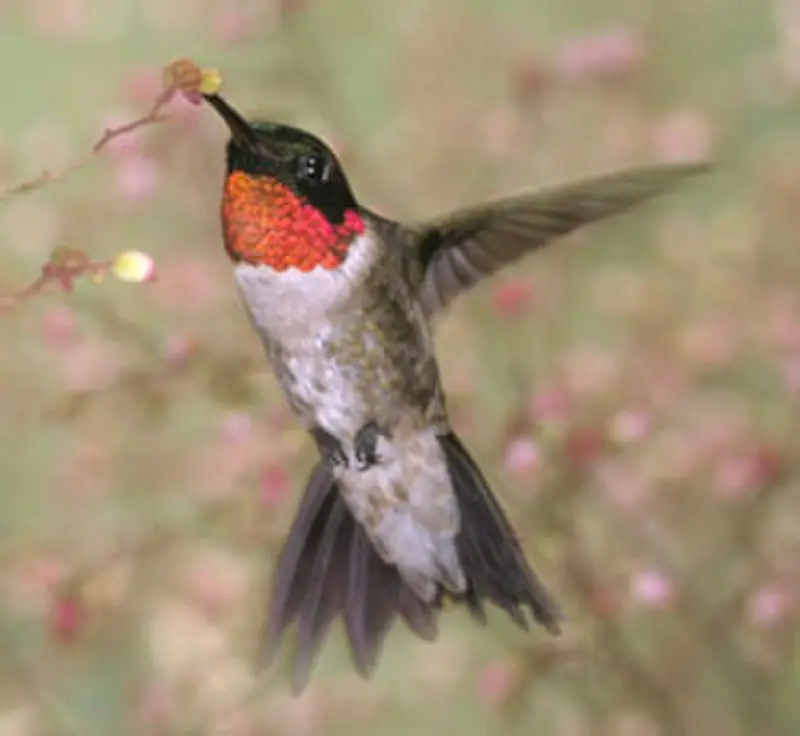
The Bare-legged swiftlet is a species of bird found in the family Apodidae, native to New Guinea. It has bare legs and lives in subtropical and tropical moist montane forests.
The plumage on its body varies from pale greyish brown to dark brown or black depending on the individual’s age, sex and location. Its wings are long and pointed with white patches at their tips.
These birds feed mainly on flying insects such as moths or dragonflies that they catch while soaring through the air.
They breed during the wet season when there is an abundance of food available for them to hunt down successfully from great heights within seconds.
With these agile skills they can escape predators easily too.
Their nests are built using saliva which acts like glue binding twigs together forming an enclosed cup shape structure where eggs will be laid by female members of this species only once every year before migration begins again come wintertime.Scientific classification:
| Kingdom | Animalia |
| Phylum | Chordata |
| Class | Aves |
| Order | Apodiformes |
| Family | Apodidae |
| Genus | Aerodramus |
| Species | A. nuditarsus |
20. Antillean Palm Swift
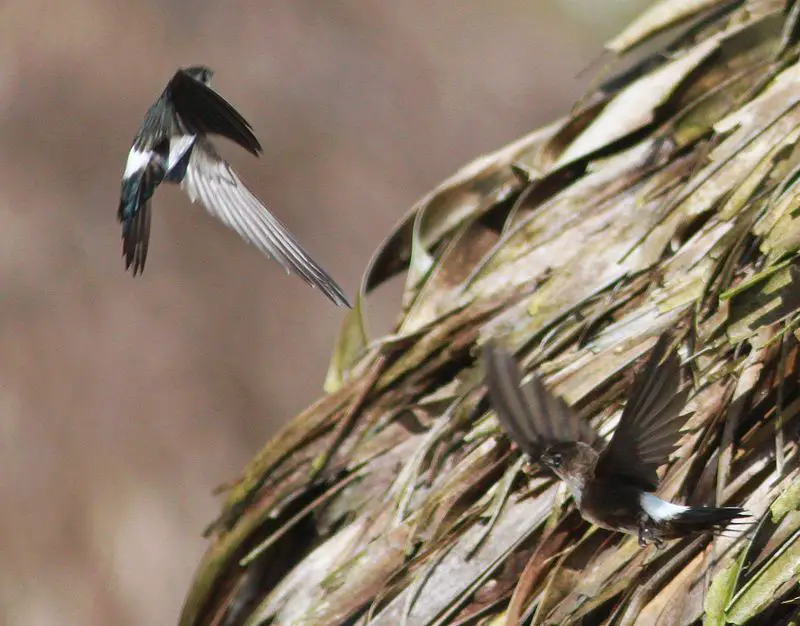
The Antillean palm swift is a species of bird found in the Caribbean islands of Cuba, Jamaica and Hispaniola. It belongs to subfamily Apodinae within the swift family Apodidae.
This beautiful creature has two distinct subspecies – Tachornis phoenicobia Gosse and Tachornis iradii Lembeye.
These birds are usually seen sitting on palms or other trees near water sources like lakes or rivers, where they hunt for small insects such as mosquitoes and flies while hovering over them with their long wingspan that can reach up to 20 cm.
They have dark gray upperparts which contrast nicely against their white underparts making them quite an attractive sight when spotted flying around during the day time.Scientific classification:
| Kingdom | Animalia |
| Phylum | Chordata |
| Class | Aves |
| Order | Apodiformes |
| Family | Apodidae |
| Genus | Tachornis |
| Species | T. phoenicobia |
21. Uniform Swiftlet
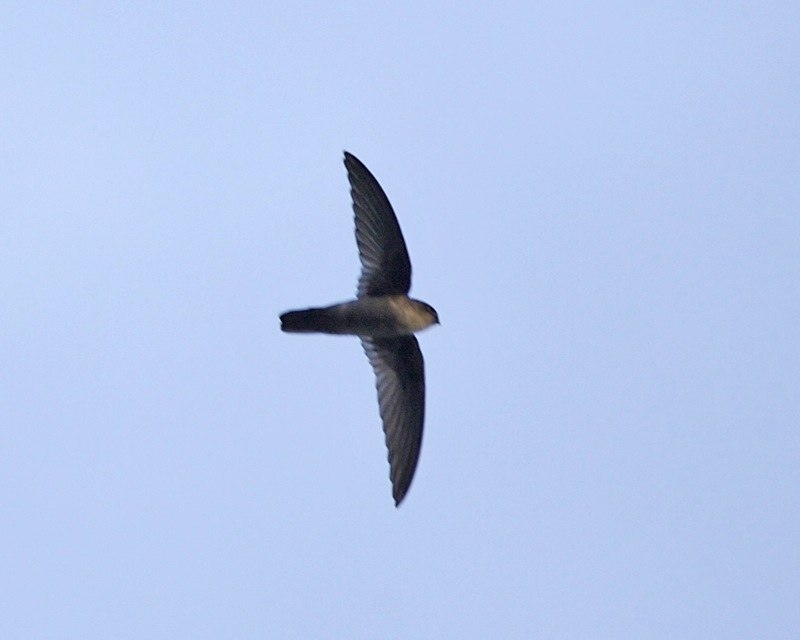
The Uniform swiftlet is a medium-sized bird with a shallowly forked tail and dark grey-brown colouring. It inhabits the Philippines, Wallacea, New Guinea and Melanesia.
This gregarious species feeds on insects by flying swiftly in search of its prey over forests, parks or even urban areas.
During breeding season it nests inside caves or other natural cavities where they build cup shaped nests made out of saliva which hardens when dry giving them an ideal place to lay their eggs as well as protect them from predators.
The Uniform Swiftlet’s population has not been studied thoroughly yet but conservation efforts must be put into place in order to ensure this beautiful species continues to thrive.Scientific classification:
| Kingdom | Animalia |
| Phylum | Chordata |
| Class | Aves |
| Order | Apodiformes |
| Family | Apodidae |
| Genus | Aerodramus |
| Species | A. vanikorensis |
Also Featured In: Guam Birds You Need to See,
22. Mayr’s Swiftlet
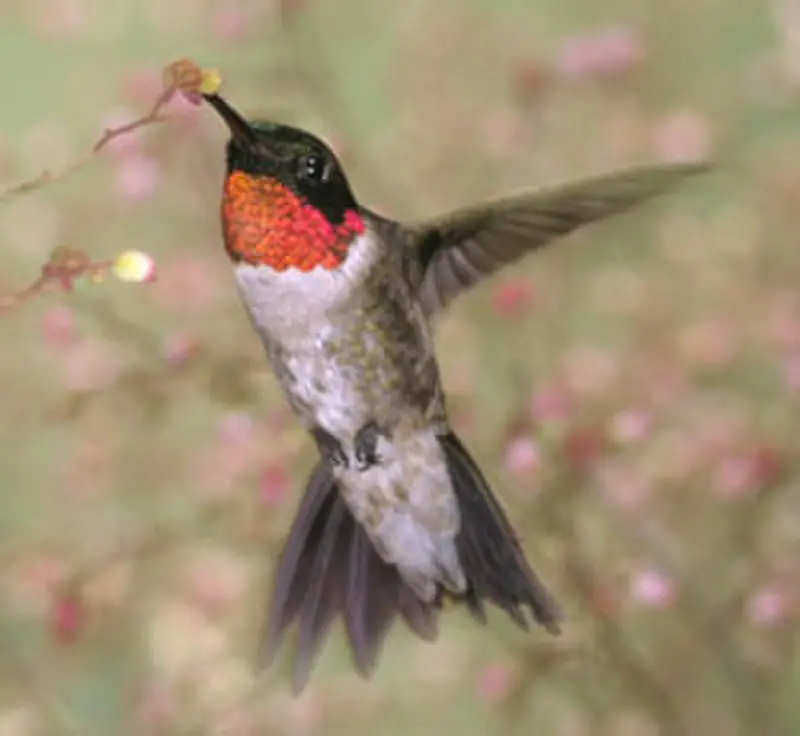
Mayr’s swiftlet is a species of small, aerial bird belonging to the family Apodidae. It has a wingspan of between 15-18 cm and its body length ranges from 10-12cm.
Its upperparts are dark brown with a blackish crown and nape patch, while its underparts are greyish white in colour.
This swift can be found mainly on New Ireland and Guadalcanal islands where it feeds primarily on flying insects such as flies, moths and beetles that it captures in midair using its sharp bill.
Mayr’s Swiftlets live in groups which roost communally at night within caves or abandoned buildings; they also engage in communal nesting activities by building mud nests near one another inside these same structures for incubating their eggs until hatching time arrives.Scientific classification:
| Kingdom | Animalia |
| Phylum | Chordata |
| Class | Aves |
| Order | Apodiformes |
| Family | Apodidae |
| Genus | Aerodramus |
| Species | A. orientalis |
23. Palau Swiftlet
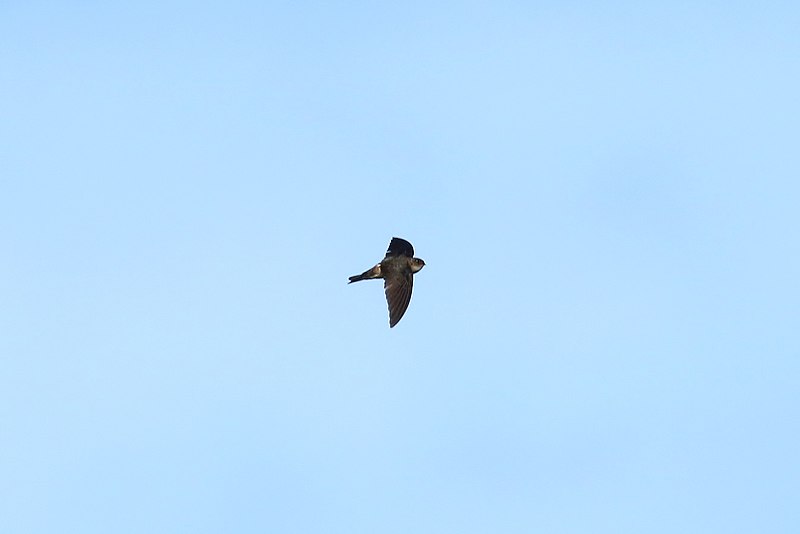
The Palau swiftlet is a species of small bird endemic to the island nation of Palau. It belongs to the family Apodidae and its natural habitat is lowland forests with moist climates.
These birds are dark brown in color, have short wings, long tails, and measure up to 8 inches in length.
They also possess very good eyesight which allows them to catch flying insects while they’re on the wing as their primary food source.
Despite being an endangered species due primarily to deforestation, it has managed so far not become extinct thanks largely due efforts from conservationists who are aiming at preserving this rare species for future generations.Scientific classification:
| Kingdom | Animalia |
| Phylum | Chordata |
| Class | Aves |
| Order | Apodiformes |
| Family | Apodidae |
| Genus | Aerodramus |
| Species | A. pelewensis |
24. Grey-Rumped Swift
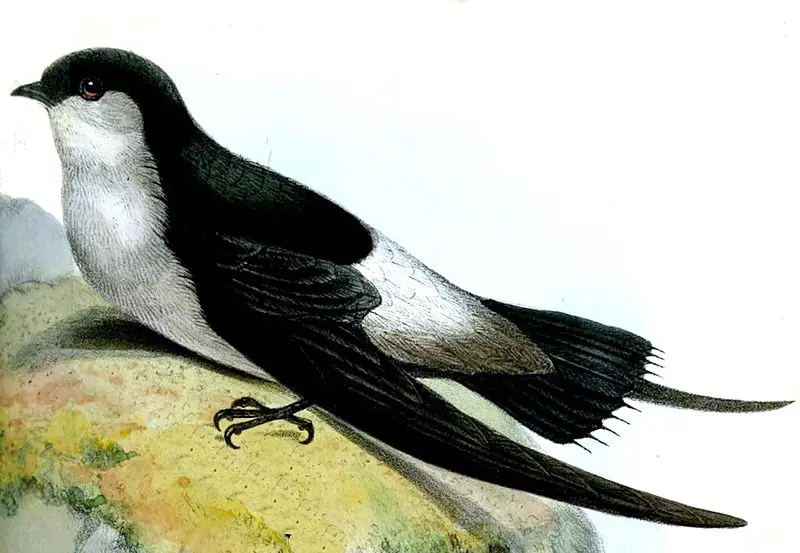
The Grey-rumped Swift is a species of bird that belongs to the Apodidae family of swifts. It is found in Honduras, Nicaragua, Costa Rica, Panama and many other countries throughout South America as well as Trinidad and Tobago and Grenada.
This swift has seven subspecies which are distinguished by their unique plumage coloration.
The grey-rumped swift can be identified by its gray back with white patches on the rump feathers in addition to pale grayish underparts.
These birds usually live near forests where they have plenty of trees for nesting purposes as well as insects for food supply.
They fly rapidly at about 30 km/h while hunting for prey such as flying ants or beetles during day time hours but rest inside hollow cavities from sunset until sunrise when they become more vulnerable against predators like owls or hawks.Scientific classification:
| Kingdom | Animalia |
| Phylum | Chordata |
| Class | Aves |
| Order | Apodiformes |
| Family | Apodidae |
| Genus | Chaetura |
| Species | C. cinereiventris |
25. Island Swiftlet
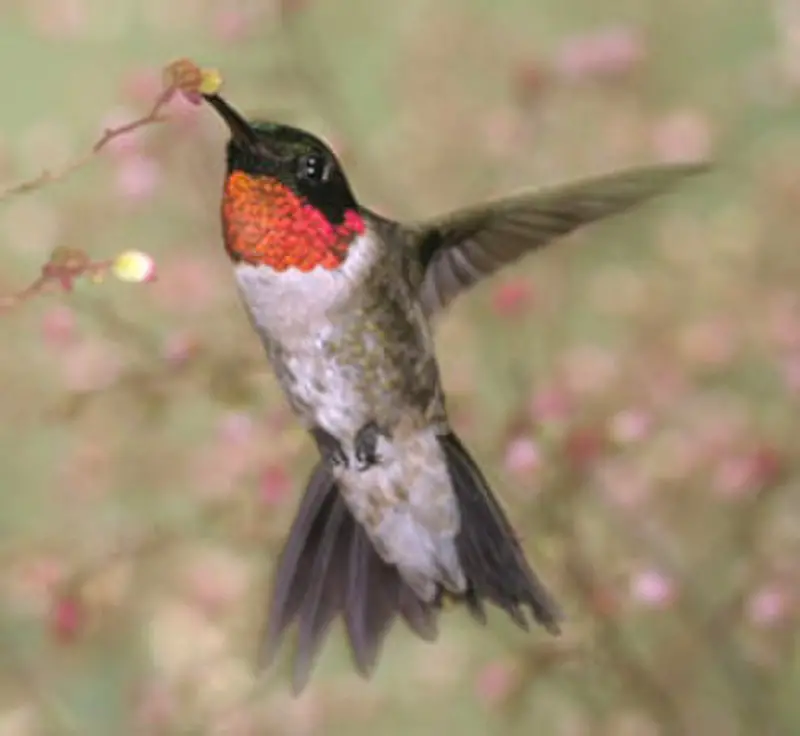
The Island Swiftlet is a species of swift found in the Caroline Islands. It has an olive-brown head and back, with white underparts and dark wings.
Its tail feathers are greyish-white at the base but become darker towards their tips.
This small bird can reach speeds of up to 50 km/h while flying through its natural habitat: tropical lowland forests or other areas near moisture sources such as rivers or wetlands.
The Island Swiftlet feeds on insects, which it catches during short flights around vegetation or open spaces within forested areas.
Conservation efforts for this species have been successful in recent years due to increased awareness about its status as a vulnerable species; however, further protection measures will be needed if populations are to remain stable over time.Scientific classification:
| Kingdom | Animalia |
| Phylum | Chordata |
| Class | Aves |
| Order | Apodiformes |
| Family | Apodidae |
| Genus | Aerodramus |
| Species | A. inquietus |
26. Halmahera Swiftlet
The Halmahera swiftlet is a species of bird found only in the forests on the Indonesian island of Halmahera.
This small, dark-colored avian belongs to the family Apodidae and forms part of what is collectively known as Moluccan Swiftlets.
Its natural habitats are subtropical or tropical moist lowland forests and subtropical or tropical moist montane forests.
These birds usually have glossy black feathers with white markings around their throats, while some may also exhibit grayish tones along its wings and tails.
They often form large flocks while they migrate from one location to another in search for food sources such as flying insects.
The IUCN classifies this species under Least Concern due to its wide range distribution across Indonesia’s islands.Scientific classification:
| Kingdom | Animalia |
| Phylum | Chordata |
| Class | Aves |
| Order | Apodiformes |
| Family | Apodidae |
| Genus | Aerodramus |
| Species | A. infuscatus |
27. Pacific Swift

The Pacific Swift is a species of bird belonging to the swift family. It has an unmistakable shape and black plumage, making it easily recognizable.
The white rump band along with heavily marked underparts are what distinguishes it from its relative, the common swift.
This beautiful bird breeds in eastern Asia and migrates during winter season towards Southeast Asia as well as Australia.
Its diet consists mainly of insects which they capture while flying at high speeds through the air; this allows them to cover long distances quickly when migrating or searching for food sources such as swarms of flies or other small animals like grasshoppers and beetles.
They usually live in large colonies near water bodies so that their prey can be found nearby without much effort on their part.Scientific classification:
| Kingdom | Animalia |
| Phylum | Chordata |
| Class | Aves |
| Order | Apodiformes |
| Family | Apodidae |
| Genus | Apus |
| Species | A. pacificus |
Also Featured In: Birds You’ll Find in Hokkaido, Birds That Live In Siquijor
28. Pallid Swift
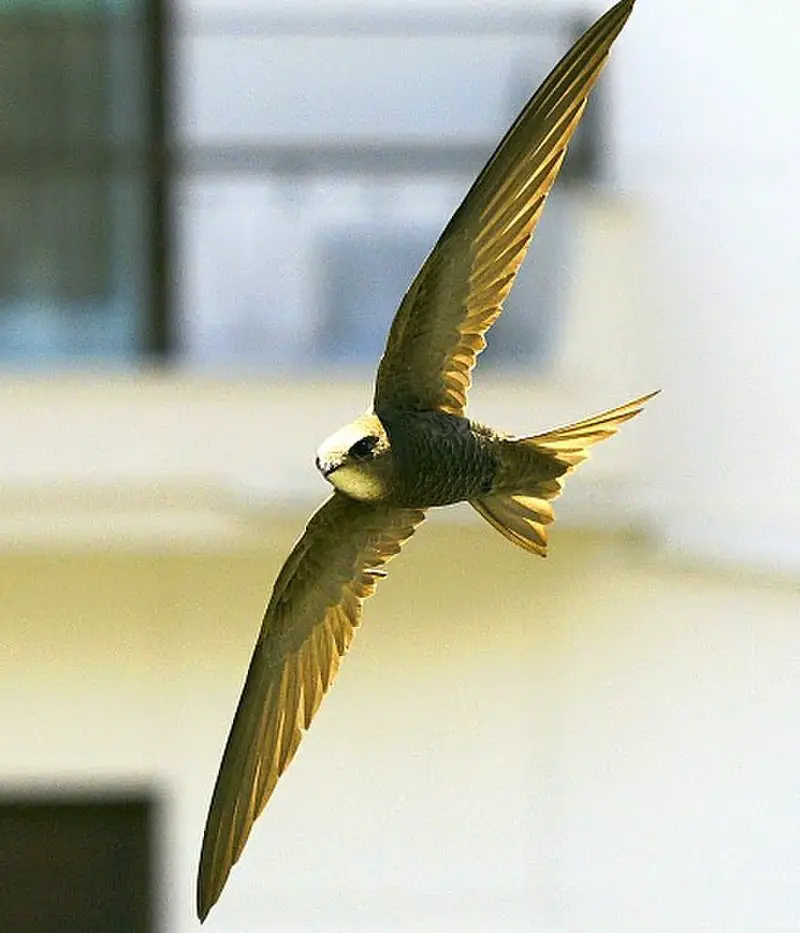
The Pallid Swift is a small bird that looks similar to the barn swallow or house martin, but it belongs to an entirely different order of birds.
This similarity in appearance is due to convergent evolution, which reflects their shared lifestyles.
These swifts have very short legs used only for clinging onto vertical surfaces such as walls and trees.
They are mostly found flying over open countryside during migration season and they feed on insects while in flight.
The feathers of this species range from greyish-brown above with white patches along its wings and tail, while beneath the body usually appears pale yellowish-white.
While these birds can be quite noisy when around roosting sites, they tend to remain silent when migrating through areas where humans live.Scientific classification:
| Kingdom | Animalia |
| Phylum | Chordata |
| Class | Aves |
| Order | Apodiformes |
| Family | Apodidae |
| Genus | Apus |
| Species | A. pallidus |
29. Philippine Swiftlet
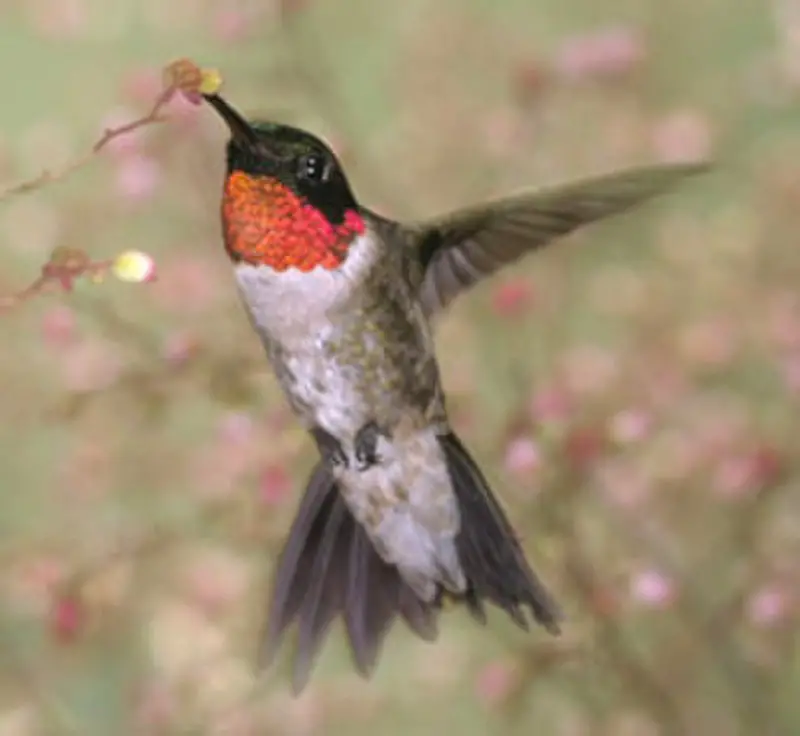
The Philippine swiftlet is a species of bird belonging to the Apodidae family found only in the Philippines. It inhabits dry and moist lowland forests as well as montane forests, making it quite adaptable.
The coloration of this small-medium sized bird ranges from greyish brown to black with white markings on its wings and tail feathers.
Its diet consists mainly of insects which are caught while flying through the air or picked up off trees or branches.
This species has been classified by IUCN Red List as least concern due to its wide distribution range across multiple islands within the country, although some local populations may be at risk if deforestation continues unchecked in their habitats.Scientific classification:
| Kingdom | Animalia |
| Phylum | Chordata |
| Class | Aves |
| Order | Apodiformes |
| Family | Apodidae |
| Genus | Aerodramus |
| Species | A. mearnsi |
Also Featured In: Most Common Birds in Negros, Palawan Island Birds
30. Scarce Swift

The Scarce Swift is a species of swift bird found in the Afromontane region. It inhabits Cameroon line, Albertine Rift montane forests, Kenya, Tanzania, Malawi and Mozambique.
This unique species stands out due to its unusual habitat choice as it prefers high altitudes up to 3000 meters above sea level.
Its body colour ranges from greyish-brown on top with white underparts while its wings are blackish-grey in hue.
The Schoutedenapus myoptilus is considered vulnerable by the International Union for Conservation of Nature due to deforestation and hunting pressures which diminish their habitats greatly over time.Scientific classification:
| Kingdom | Animalia |
| Phylum | Chordata |
| Class | Aves |
| Order | Apodiformes |
| Family | Apodidae |
| Genus | Schoutedenapus De Roo, 1968 |
| Species | S. myoptilus |
31. Spot-Fronted Swift
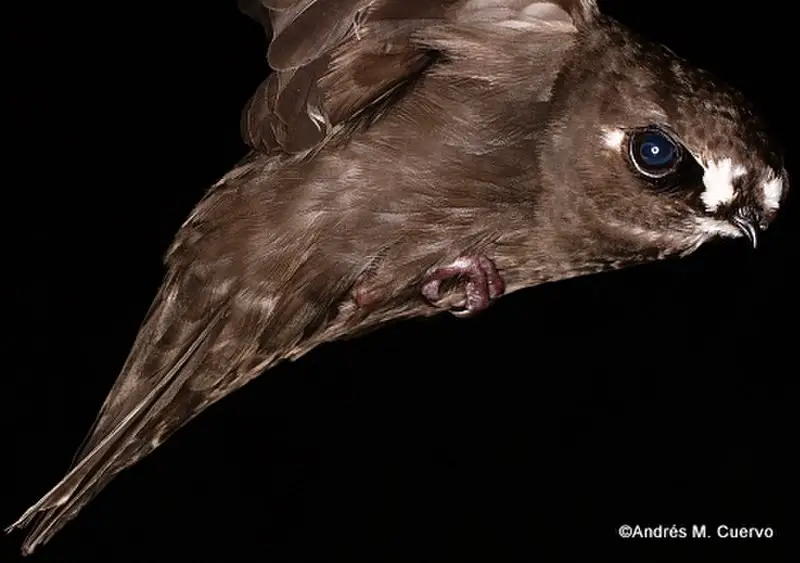
The Spot-fronted Swift is a species of bird belonging to the subfamily Cypseloidinae of the swift family Apodidae.
It inhabits parts of Colombia, Costa Rica, Ecuador, Panama, Peru and Venezuela and measures approximately 14 cm (5.5 in) long with an average weight of 23 g (0.81 oz).
Males and females appear identical being almost entirely blackish brown in colouration except for its distinctive white forehead spot which gives it its name.
These birds feed mainly on insects taken while flying but occasionally visit flowers or catch prey from leaves or branches near water sources such as rivers or small lakes.
They are known to form large flocks during migration periods when travelling great distances northwards each year between breeding grounds and wintering habitats with some pairs even crossing oceans.Scientific classification:
| Kingdom | Animalia |
| Phylum | Chordata |
| Class | Aves |
| Order | Apodiformes |
| Family | Apodidae |
| Genus | Cypseloides |
| Species | C. cherriei |
32. Australian Swiftlet
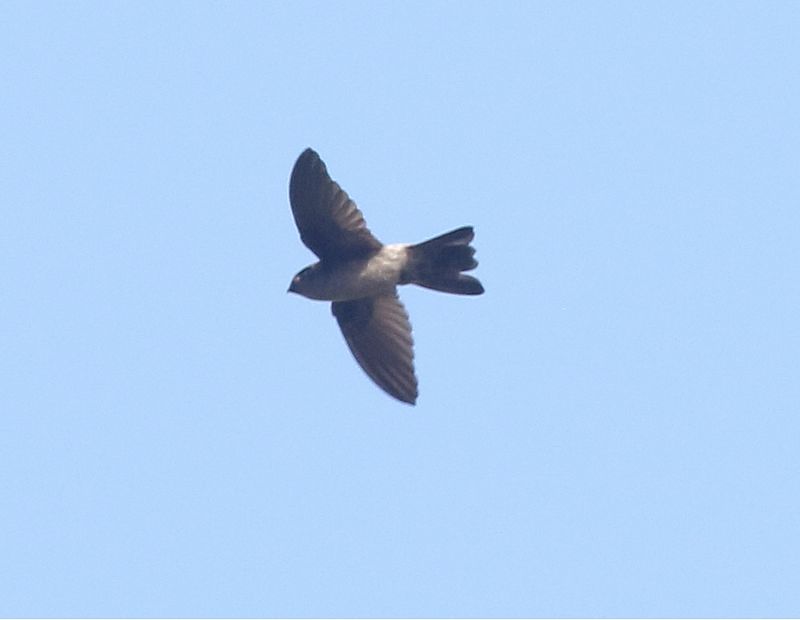
The Australian swiftlet (Aerodramus terraereginae) is a small bird native to Queensland in north-eastern Australia.
It belongs to the genus Aerodramus, which is part of the Apodidae family, commonly known as swifts or aerial insectivores.
This species was previously included in the white-rumped swiftlet but has since been recognised as its own distinct species and consists of two subspecies that are sometimes considered separate species altogether.
The Australian Swiftlet can be distinguished by its greenish upperparts with pale edges on some feathers, along with a grey throat and breast.
Its underparts are usually lighter than its backside and it also features an elongated forked tail typical of most swifts.
These birds prefer open woodlands where they feed mainly on insects caught midair over rivers or lakes closeby their nesting sites located high up within trees or buildings like churches or abandoned mineshafts.Scientific classification:
| Kingdom | Animalia |
| Phylum | Chordata |
| Class | Aves |
| Order | Apodiformes |
| Family | Apodidae |
| Genus | Aerodramus |
| Species | A. terraereginae |
Also Featured In: Common Townsville Birds,
33. Plume-Toed Swiftlet
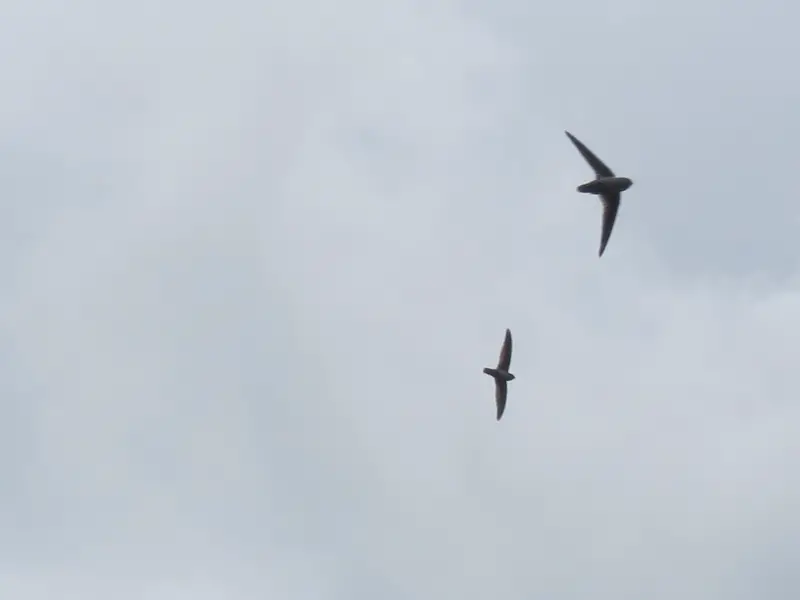
The Plume-toed swiftlet is a small bird belonging to the Apodidae family. It can be found in eastern Indian Ocean islands, Malay Peninsula, Sumatra and lowland Borneo.
This species prefers moist subtropical or tropical forests for its natural habitat.
The English ornithologist Robert first described it as a subspecies of glossy swiftlet before being identified as an independent species from the same genus – Collocalia affinis.
Its body has greyish brown upperparts while its underparts are white with some dark streaks on them which also extend onto their forehead and face giving it that distinct look among other birds of similar size in this region.Scientific classification:
| Kingdom | Animalia |
| Phylum | Chordata |
| Class | Aves |
| Order | Apodiformes |
| Family | Apodidae |
| Genus | Collocalia |
| Species | C. affinis |
34. Indian Swiftlet
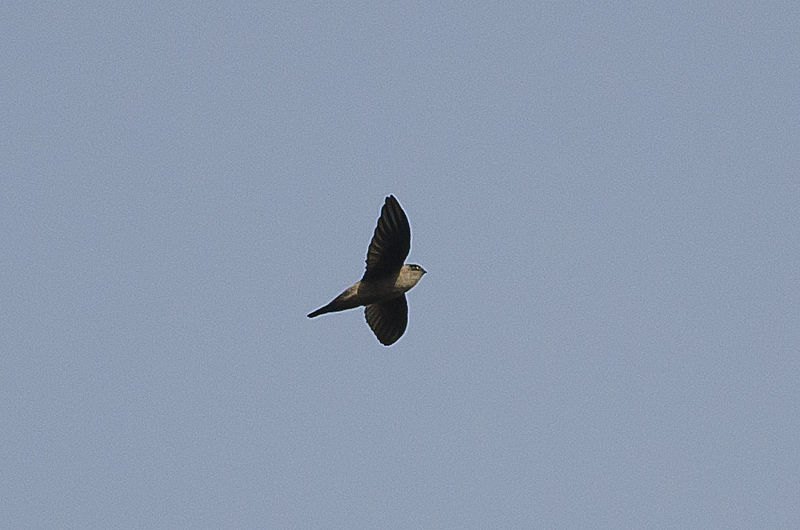
The Indian swiftlet is a small swift that is found in the hills of Sri Lanka and south west India. It builds its nest, which consists of thick saliva on vertical surfaces such as cliffs or cave walls, often forming colonies for breeding purposes.
The nests are white and shiny with two eggs being laid inside. This species’ edible-nest variety has become highly sought after as it can be harvested to make bird’s nest soup – deemed an expensive delicacy due to its rarity.
They are also known for their great flying skills; they can reach speeds up to 35 miles per hour while diving through narrow gaps between trees or buildings at amazing speed.Scientific classification:
| Kingdom | Animalia |
| Phylum | Chordata |
| Class | Aves |
| Order | Apodiformes |
| Family | Apodidae |
| Genus | Aerodramus |
| Species | A. unicolor |
35. Himalayan Swiftlet
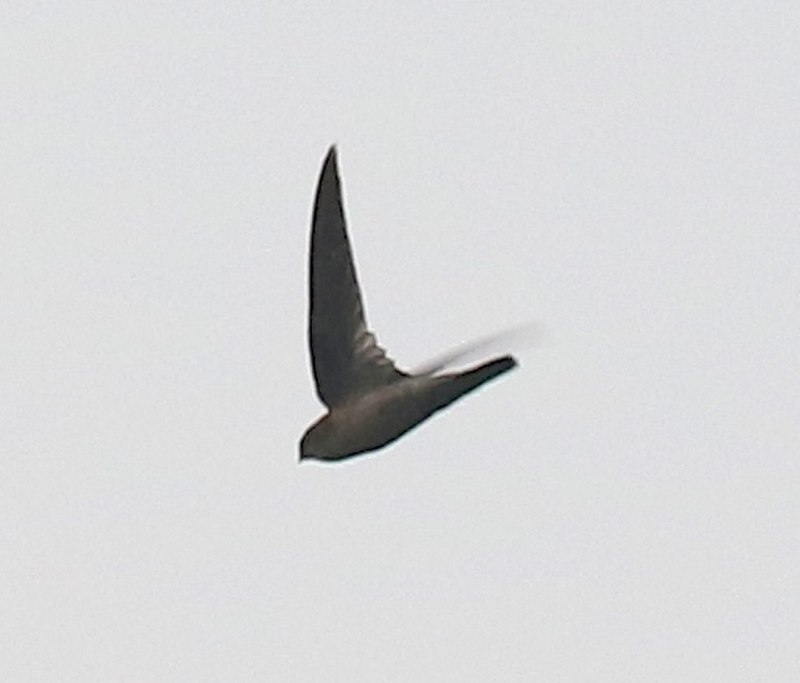
The Himalayan swiftlet is a small species of swift found in the Himalayas and Southeast Asia. It typically lives in colonies, and some populations are migratory.
Its five subspecies have been debated as two separate full species; Indochinese Swiftlets (Aerodramus rogersi) and Javan Swiftlets ( Aerodramus vulcan).
This agile bird has long wings which help it to fly quickly through its mountainous environment, capturing insects on the wing with its wide open beak.
It nests mostly inside caves or crevices, using saliva to build cup-shaped structures for eggs or chicks.
The Himalayan Swiftlet plays an important role in their habitat by controlling insect numbers while providing food sources for other animals such as bats, martens and birds of prey.Scientific classification:
| Kingdom | Animalia |
| Phylum | Chordata |
| Class | Aves |
| Order | Apodiformes |
| Family | Apodidae |
| Genus | Aerodramus |
| Species | A. brevirostris |
Also Featured In: Birds that Commonly Found in Andhra Pradesh,
36. Seychelles Swiftlet
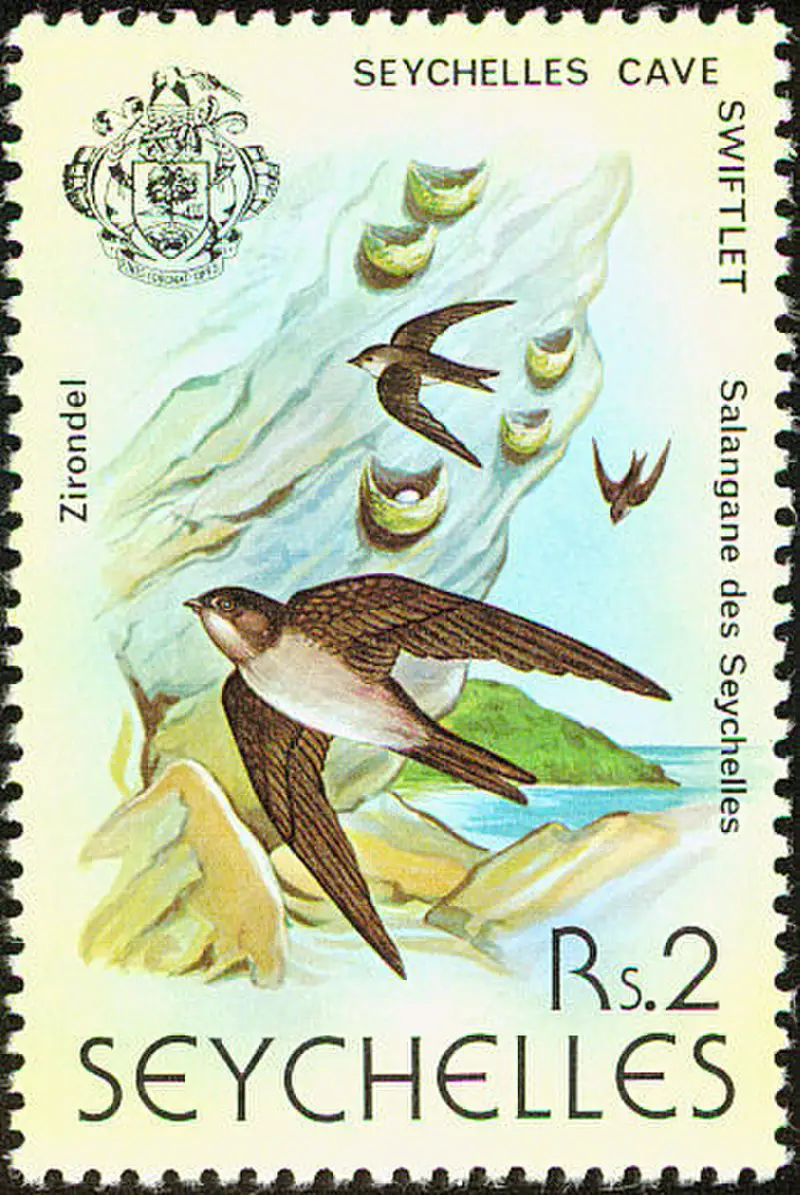
The Seychelles swiftlet is a small bird that can only be found in the Seychelles Islands of the Indian Ocean. It measures 10-12 cm long with a wingspan of 28 cm and weighs about 10 g.
Its colors range from dark grey-brown on its upperparts to paler browns on its under parts, while it has black bill and legs. The tail is forked shaped and also darker than other body parts.
This species lives mainly in coastal areas where they build their nests inside caves or rock crevices using saliva as building material; however, some may also reside inland near human settlements such as villages or townships.
They feed mostly during evening hours on insects which are caught midair by flying fast around trees.Scientific classification:
| Kingdom | Animalia |
| Phylum | Chordata |
| Class | Aves |
| Order | Apodiformes |
| Family | Apodidae |
| Genus | Aerodramus |
| Species | A. elaphrus |
37. Germain’s Swiftlet
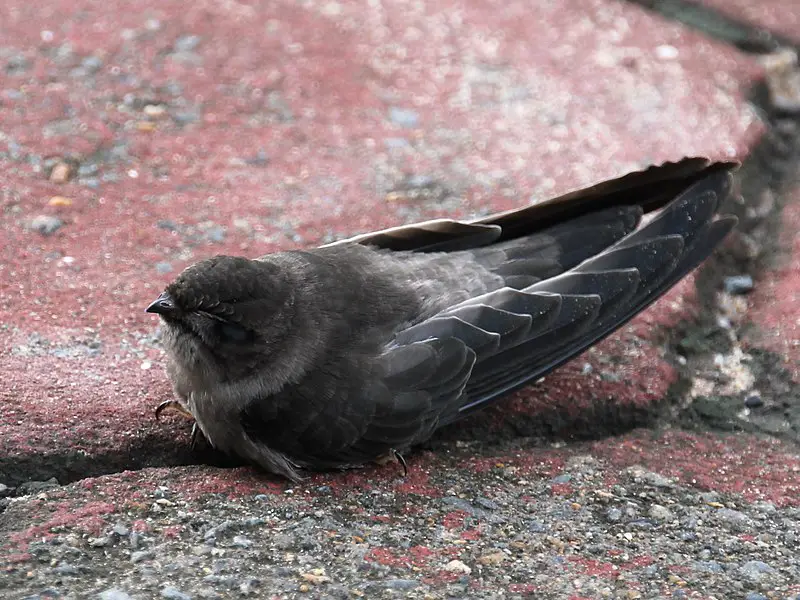
Germain’s swiftlet is a species of swift native to parts of Southeast Asia. This small bird measures 12 cm in length and weighs just 13-14 grams, with blackish-brown plumage on its upper body.
Its habitat includes subtropical or tropical moist lowland forests as well as montane forests in countries such as China, Indonesia, Laos, Malaysia, Myanmar, the Philippines, Singapore and Thailand.
It feeds mainly on insects which it catches while flying at high speeds through the air.
Germain’s Swiftlet has adapted remarkably well to human presence; they have been observed nesting inside buildings constructed by humans since the 19th century due to their preference for sheltered areas over open spaces when raising younglings.Scientific classification:
| Kingdom | Animalia |
| Phylum | Chordata |
| Class | Aves |
| Order | Apodiformes |
| Family | Apodidae |
| Genus | Aerodramus |
| Species | A. germani |
38. Marquesan Swiftlet
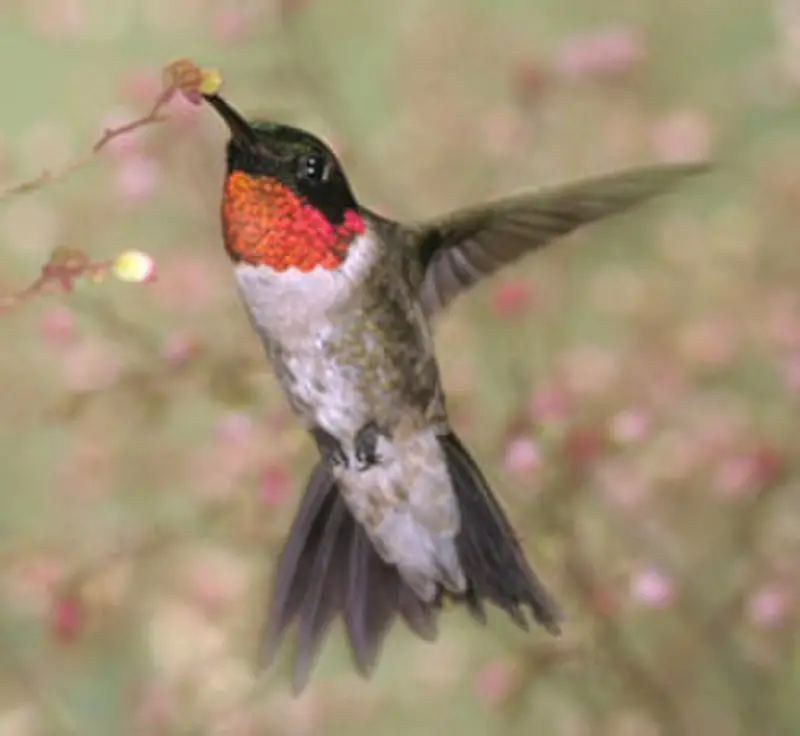
The Marquesan swiftlet is a species of small bird belonging to the Apodidae family. It can be found exclusively in French Polynesia, where it lives mainly in moist lowland forests.
These birds are known for their unique ability to fly swiftly and gracefully through the air with ease.
They have dark brown feathers on top, white underneath, and narrow wings that enable them to make fast-paced turns without losing speed or momentum.
The Marquesan swiftlet feeds mainly on flying insects but also eats fruits and seeds occasionally too; it nests high up among rocks and trees using its saliva as a glue for attaching twigs together.
Although they are not listed as an endangered species yet, due to habitat destruction caused by human activities like logging there is concern that their populations could decrease drastically soon if no conservation efforts are made soon enough.Scientific classification:
| Kingdom | Animalia |
| Phylum | Chordata |
| Class | Aves |
| Order | Apodiformes |
| Family | Apodidae |
| Genus | Aerodramus |
| Species | A. ocistus |
Also Featured In: Common Birds of Marquesas Keys,
39. Atiu Swiftlet
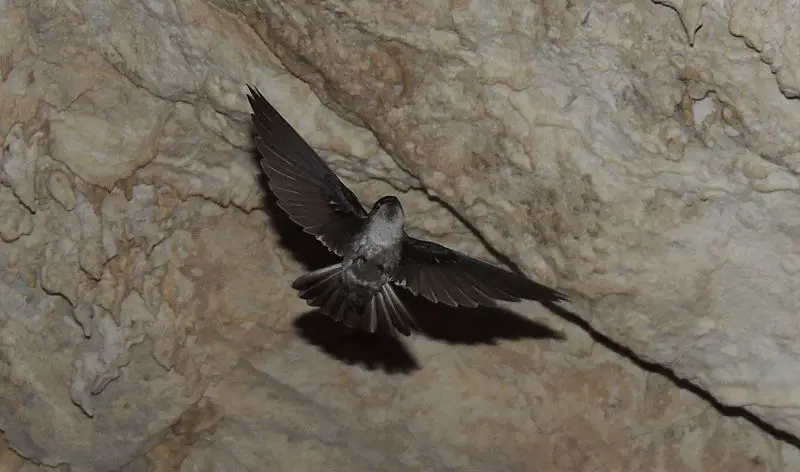
The Atiu Swiftlet is a lovely little bird native to the Cook Islands. Found only on the island of Atiu, it measures just 10 cm long and has sooty-brown feathers above and lighter brown below.
It lives in both fernlands and mixed horticultural areas where it feeds, as well as makatea limestone caves which provide shelter for nesting sites.
This species of swiftlet is an important part of the local ecosystem and its presence helps maintain biodiversity in this area.
With its small size but loud chirpings, they are sure to bring joy to anyone lucky enough to observe them.Scientific classification:
| Kingdom | Animalia |
| Phylum | Chordata |
| Class | Aves |
| Order | Apodiformes |
| Family | Apodidae |
| Genus | Aerodramus |
| Species | A. sawtelli |
40. Pygmy Swiftlet
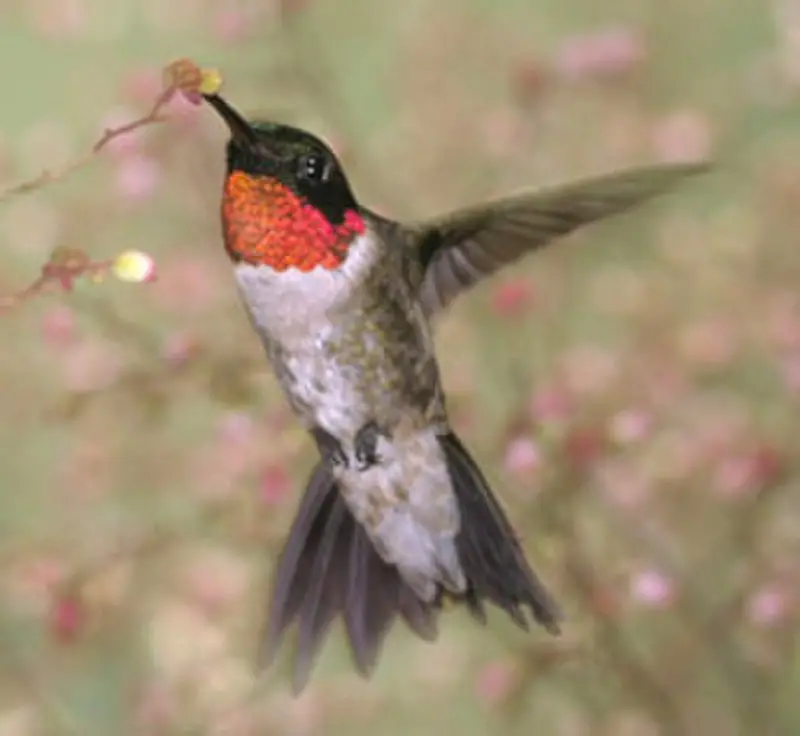
The Pygmy Swiftlet is a species of swift found only in the Philippines and boasts the title as being the world’s smallest swift at under 9 cm in length.
This tiny bird weighs an astounding 5 grams, but what makes it truly unique is its ability to use echolocation for navigation when nesting deep within dark caves.
It has adapted this skill due to its lack of light given off by other sources such as stars or moonlight.
The pygmy swiftlet survives on small insects that can be found within their natural habitat of subtropical or tropical moist lowland forests, making them an important part of local ecosystems.Scientific classification:
| Kingdom | Animalia |
| Phylum | Chordata |
| Class | Aves |
| Order | Apodiformes |
| Family | Apodidae |
| Genus | Collocalia |
| Species | C. troglodytes |
Also Featured In: Samar Island Birds You Should Know,
41. Whitehead’s Swiftlet
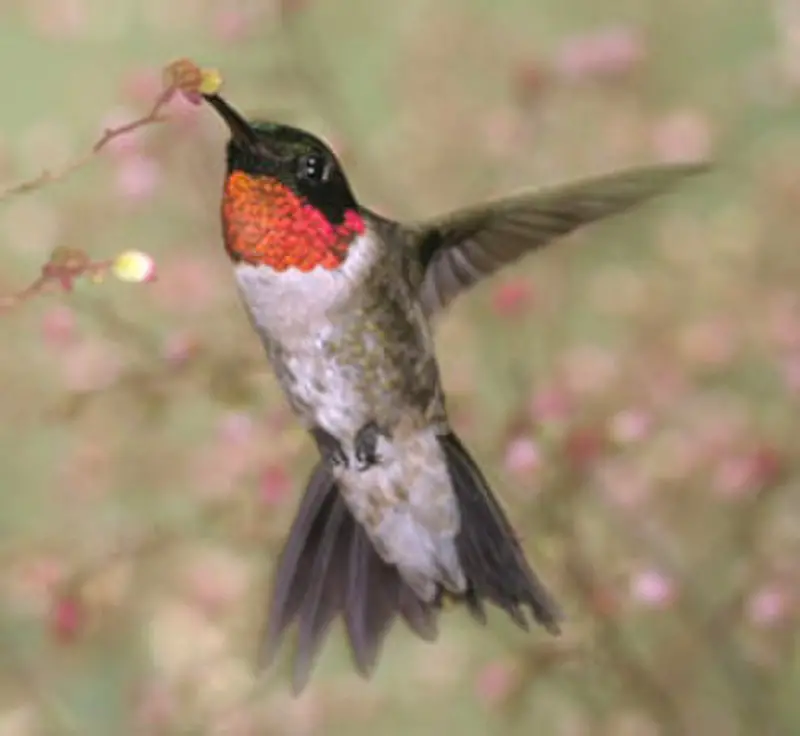
Whitehead’s swiftlet is a unique species of the Apodidae family, endemic to the Philippines. It was named after John Whitehead, an explorer who collected natural history specimens in Borneo and Southeast Asia during his expeditions.
This bird inhabits subtropical or tropical moist montane forests as its natural habitat. However, due to limited research on it, there is still insufficient information about its status in nature today.
Nevertheless, given that this species lives in some remote areas where human intervention has been minimal so far can be assumed that it may not have suffered major population decline yet.
Conservation efforts are nevertheless necessary for preserving these birds’ habitats and populations safe from any future threats they might face due to climate change or other anthropogenic activities.Scientific classification:
| Kingdom | Animalia |
| Phylum | Chordata |
| Class | Aves |
| Order | Apodiformes |
| Family | Apodidae |
| Genus | Aerodramus |
| Species | A. whiteheadi |
42. Tepui Swift
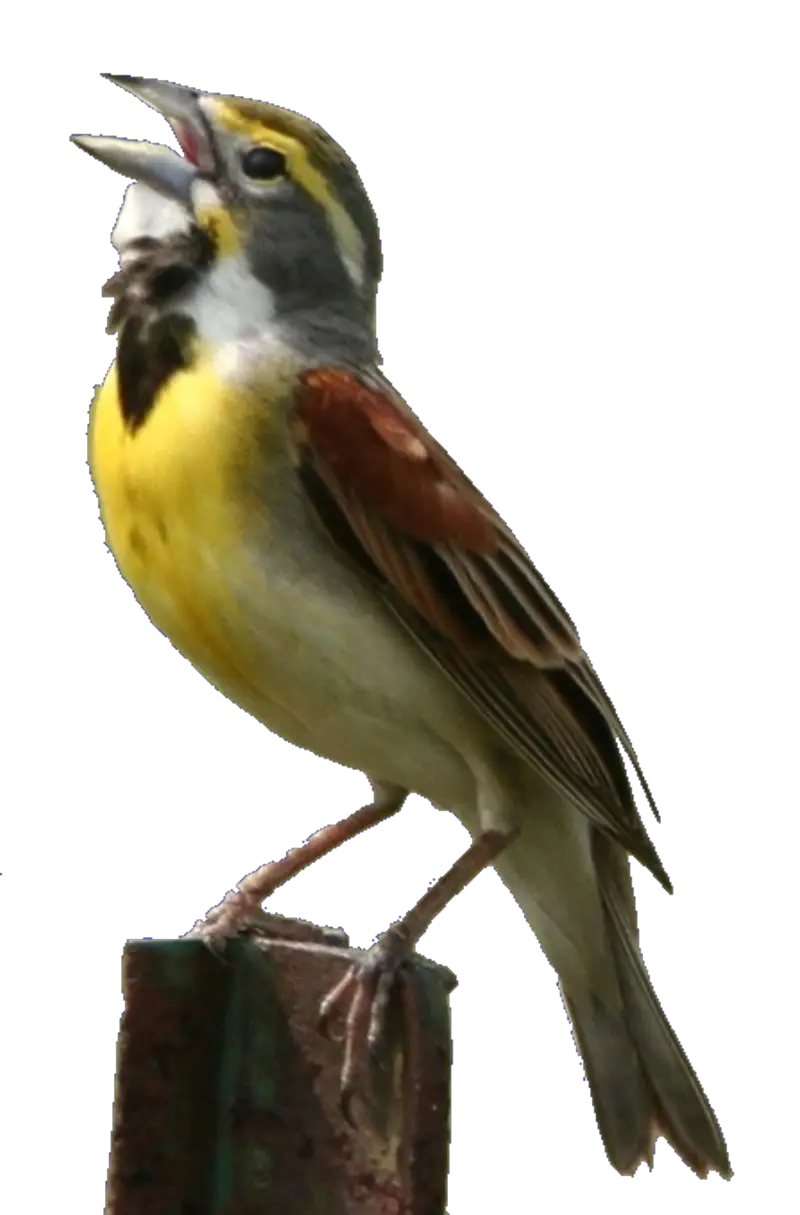
The Tepui Swift is a species of bird in the Apodidae family, belonging to Cypseloidinae subfamily.
It is native to Brazil, Guyana and Venezuela and was discovered back in 19th century but wasn’t identified as separate species until 1972.
Later it was moved from genus Cypseloides into Streptoprocne by 2000s. This small avian lives among tepuis: flat-topped mountains that are largely covered with dense tropical forest and possess unique ecosystem which makes them quite special habitats for many rare plants and animals – including this one.
The Tepui Swifts inhabit these rugged highlands where they can be seen flying around searching for insects or taking rest on rocky cliffs near rivers.Scientific classification:
| Kingdom | Animalia |
| Phylum | Chordata |
| Class | Aves |
| Order | Apodiformes |
| Family | Apodidae |
| Genus | Streptoprocne |
| Species | S. phelpsi |
43. Sulawesi Swiftlet
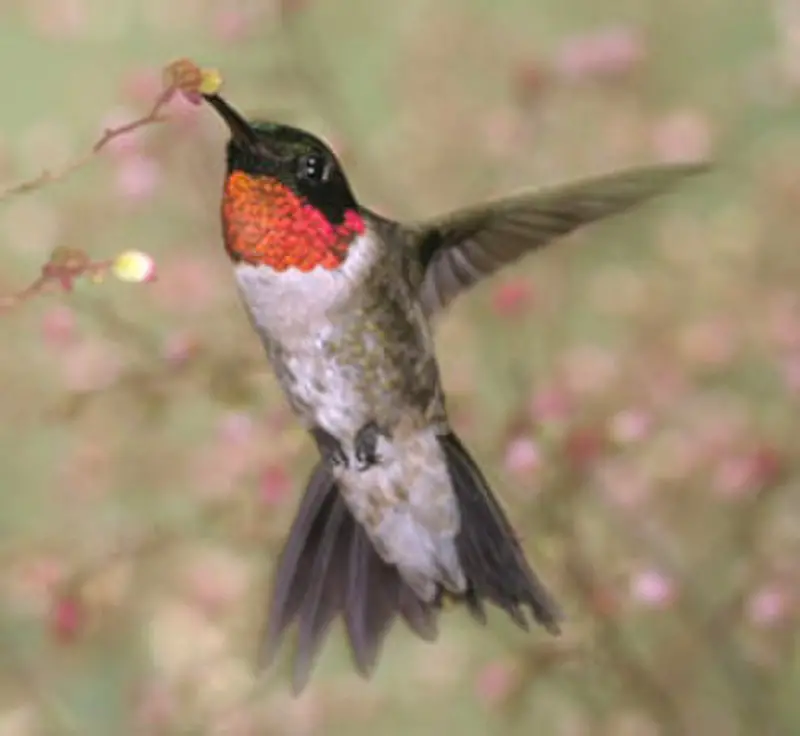
The Sulawesi swiftlet is a species of bird in the family Apodidae. It is endemic to Sulawesi and was formerly considered part of the Moluccan swiftlet’s subspecies.
The Sulawesi swiftlet can be found living in subtropical or tropical moist lowland forests, as well as montane forests with high humidity levels.
This smallbird has long wings that allow it to soar over vast areas while searching for food such as insects, which are its main source of nutrition.
Its feathers are grey-brown on top and white underneath, blending into its surroundings when flying at great speeds through dense vegetation.
The population numbers have decreased due to deforestation caused by human activities but conservation efforts continue towards preserving this majestic creature’s habitat so future generations may enjoy seeing them fly overhead like tiny specks against an azure sky.Scientific classification:
| Kingdom | Animalia |
| Phylum | Chordata |
| Class | Aves |
| Order | Apodiformes |
| Family | Apodidae |
| Genus | Aerodramus |
| Species | A. sororum |
44. Seram Swiftlet
The Seram swiftlet is a species of small bird found on the Indonesian islands of Buru, Seram, Boano and Ambon.
It was previously classified as a subspecies of the Moluccan Swiftlet but has now been recognized as its own distinct species.
This nocturnal bird typically resides in lowland or montane forests where it feeds mainly on insects that are caught midair during its nightly flights.
Its body measures between 12 to 13 cm long with greyish-brown feathers covering most parts while its head and wings have more brown tones.
The lower part of their chest surface appears paler compared to other areas which helps differentiate them from similar birds such as the Grey-rumped Treeswift and White-throated Needletail.Scientific classification:
| Kingdom | Animalia |
| Phylum | Chordata |
| Class | Aves |
| Order | Apodiformes |
| Family | Apodidae |
| Genus | Aerodramus |
| Species | A. ceramensis |
45. Dark-Rumped Swift
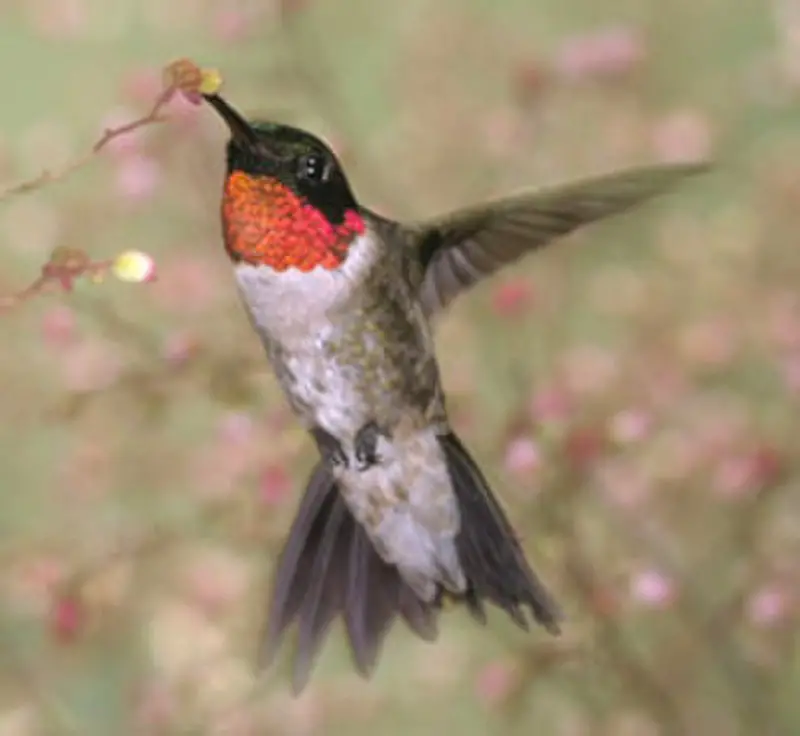
The dark-rumped swift is a species of bird belonging to the Apodidae family. It can be found in Bhutan, Northeast India and occasionally in Thailand as vagrants.
These birds inhabit subtropical or tropical moist lowland forests, but their population is diminishing due to habitat destruction caused by human activities such as deforestation and urbanization.
They are small birds with short wings, long tail feathers and pale grey underparts which distinguish them from other swifts.
This species has adapted well for aerial movement since it spends most of its life on the wing while hunting insects during flight.
The conservation status of this species is vulnerable because they are losing their natural habitats at an alarming rate due to manmade disturbances like industrialisation and mining operations that have resulted in large scale destruction of forest cover across much parts of Asia where these birds live naturally.Scientific classification:
| Kingdom | Animalia |
| Phylum | Chordata |
| Class | Aves |
| Order | Apodiformes |
| Family | Apodidae |
| Genus | Apus |
| Species | A. acuticauda |
46. Ameline Swiftlet
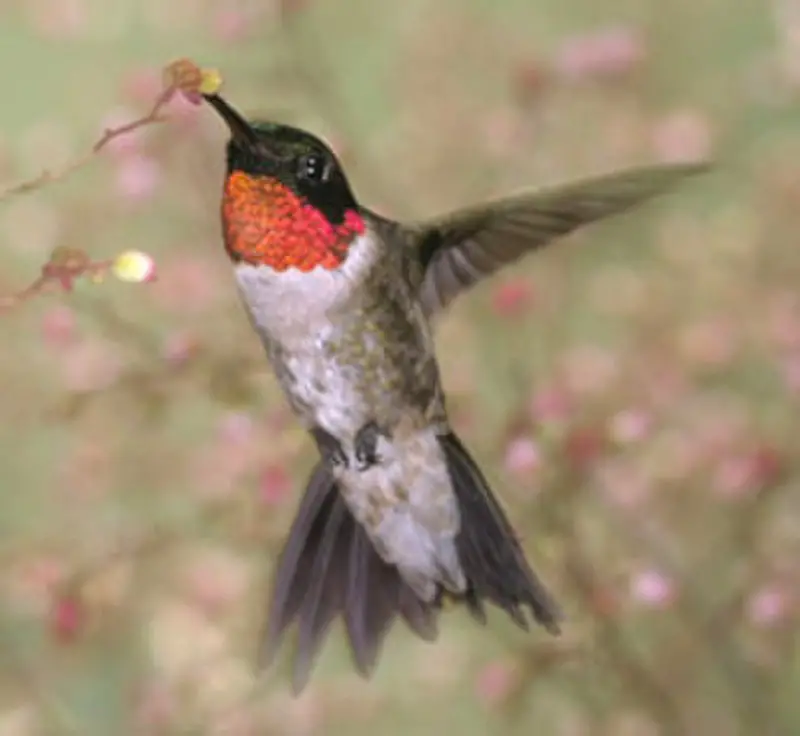
The Ameline swiftlet is a small bird endemic to the Philippines. It inhabits subtropical or tropical moist lowland forests, and currently it has two recognized subspecies.
This species was formerly considered as a subspecies of the uniform swiftlet, but now has its own classification due to certain differences in characteristics like size and colouring.
Despite some concerns around conservation, this species remains on the Least Concern list with no current threats that could endanger it’s population numbers significantly.
The grey plumage of these birds makes them distinct from other members of their genus Aerodramus which typically have brownish colours instead.
They are an important part of their ecosystems since they help control insect populations by catching them for food during flight.Scientific classification:
| Kingdom | Animalia |
| Phylum | Chordata |
| Class | Aves |
| Order | Apodiformes |
| Family | Apodidae |
| Genus | Aerodramus |
| Species | A. amelis |
47. Madagascar Spinetail
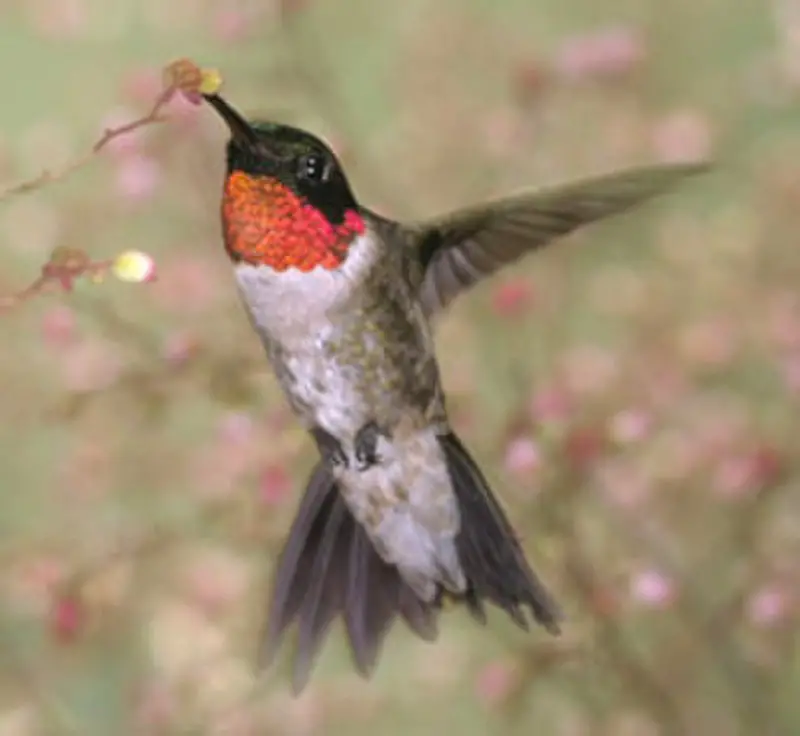
The Madagascar spinetail is a species of swift found in Comoros, Madagascar and Mayotte. It belongs to the family Apodidae and has an impressive appearance with its long forked tail feathers.
Its body is predominantly brownish-grey while its wings are darker. This beautiful bird can be seen gliding through the air in search of insects which it captures midflight by using its large mouthparts.
In addition, they also feed on fruits like figs and bananas as well as small lizards that inhabit their habitats.
The Madagascar spinetail’s specific conservation status is unknown but due to deforestation, hunting and other human activities their numbers have been declining steadily over recent years making them vulnerable to extinction if not protected soon enough from these threats.Scientific classification:
| Kingdom | Animalia |
| Phylum | Chordata |
| Class | Aves |
| Order | Apodiformes |
| Family | Apodidae |
| Genus | Zoonavena |
| Species | Z. grandidieri |
48. Mossy-Nest Swiftlet

The mossy-nest swiftlet is a species of bird belonging to the family Apodidae. It can be found in northern Borneo, Natuna and Derawan Islands as well as Nias Island off western Sumatra.
This bird prefers subtropical or tropical moist lowland forests for its natural habitat. With its black upperparts, white patches on the wings and greyish underparts this species is quite distinct from other swifts.
Its nest consists of an open cup made up of saliva that it secretes while flying around with mud walls which makes them look like small mounds covered by vegetation – thus giving it its name ‘mossy-nest’.
The diet mainly comprises insects caught on flight making them important predators in forest ecosystems helping keeping insect populations in check.Scientific classification:
| Kingdom | Animalia |
| Phylum | Chordata |
| Class | Aves |
| Order | Apodiformes |
| Family | Apodidae |
| Genus | Aerodramus |
| Species | A. salangana |
49. Plain Swift
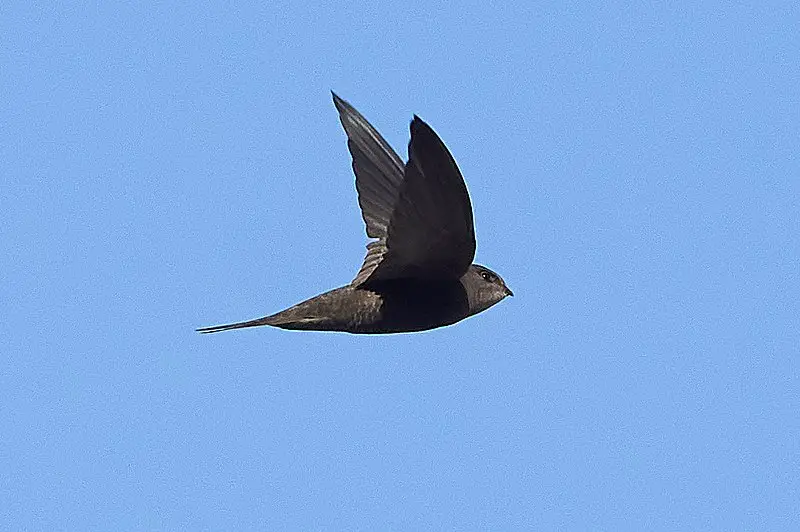
The Plain Swift (Apus unicolor) is a medium-sized bird belonging to the swift family.
With its short legs and long, slender wingspan, it closely resembles a Barn Swallow or House Martin but actually isn’t related to them at all
Instead this similarity between species from different families has come about through convergent evolution – both types of birds have adapted to similar lifestyles.
They spend most of their lives in flight, only rarely landing on vertical surfaces like cliffsides where they can cling with their feet for support.
Their diet consists mainly of airborne insects which they catch while flying so rapidly that even other swifts cannot keep up.
This speedy lifestyle makes them difficult to study and observe as they are often gone before you’ve had time to take notice.Scientific classification:
| Kingdom | Animalia |
| Phylum | Chordata |
| Class | Aves |
| Order | Apodiformes |
| Family | Apodidae |
| Genus | Apus |
| Species | A. unicolor |
Also Featured In: Fuerteventura Island Birds You Need to See,
50. Little Swift
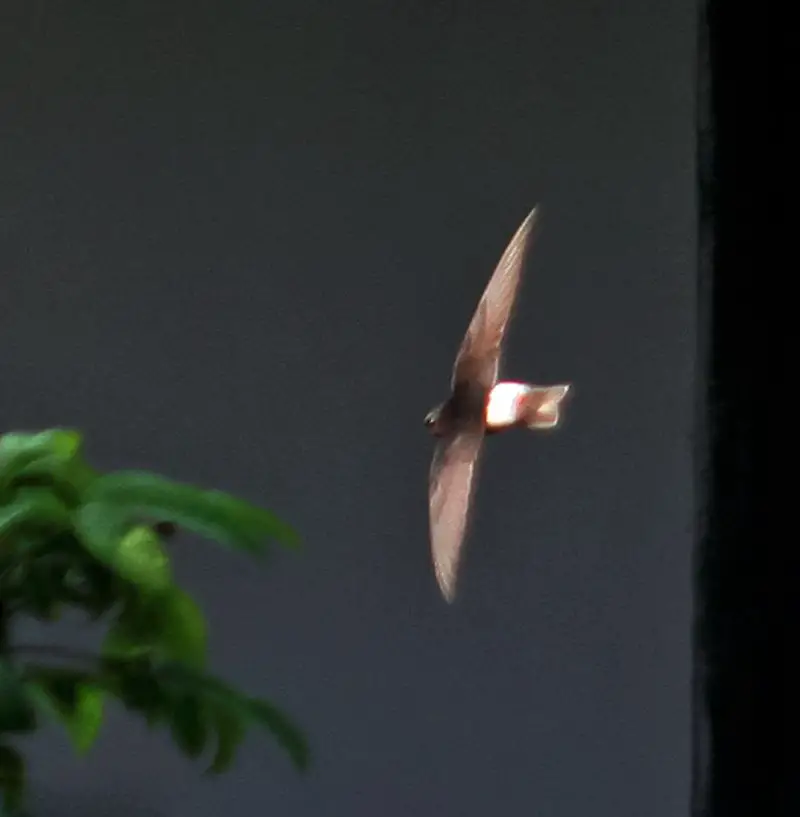
The Little Swift is a small species of swift found in Africa and southwestern Asia. It is also known to be a vagrant or local breeder in parts of southern Europe.
These birds prefer habitats such as urban areas, rocky cliffs and other sheltered locations where they build their nests using the same techniques that all members of the Apodiformes order use.
They are extremely fast flyers, hence why they were given their Latin name ‘Apus’, which means swift.
The ancient Greeks believed these birds had no feet due to how swiftly they flew. With its unique coloration – grey back with white underparts – this bird stands out from its relatives in the avian world.Scientific classification:
| Kingdom | Animalia |
| Phylum | Chordata |
| Class | Aves |
| Order | Apodiformes |
| Family | Apodidae |
| Genus | Apus |
| Species | A. affinis |
Also Featured In: Birds that Live in Rajasthan, Birds of Andhra Pradesh
51. Northern Rough-Winged Swallow
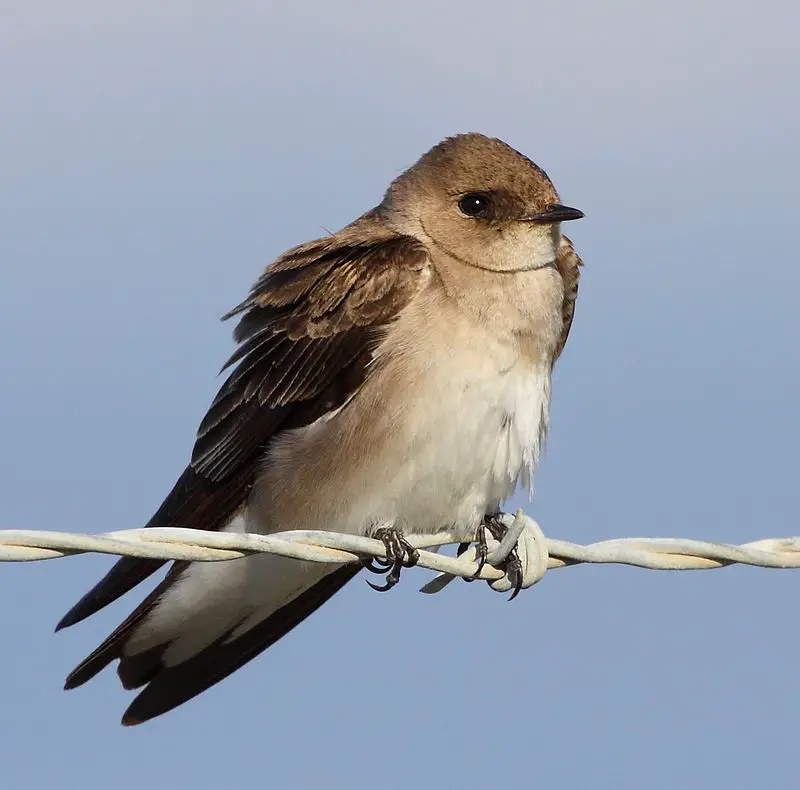
The Northern Rough-winged Swallow is a small migratory bird belonging to the genus Stelgidopteryx.
It is easily identifiable by its “scraper wing” and serrated feathers, giving it the common name of rough-winged swallow.
These birds are found in North America during summer months, migrating south for winter.
They have brown upperparts with a white belly and greyish wings which show darker markings near their tips when seen from below.
Their diet consists mainly of insects such as flies, beetles and wasps captured on the wing while flying low over grassy areas or water bodies like ponds or lakes.
As they migrate long distances each year between their breeding grounds in North America and their wintering sites further southwards, these swallows rely heavily on thermals created by warm air rising up from ground level to help them soar high into the sky with minimal effort.Scientific classification:
| Kingdom | Animalia |
| Phylum | Chordata |
| Class | Aves |
| Order | Passeriformes |
| Family | Hirundinidae |
| Genus | Stelgidopteryx |
| Species | S. serripennis |